White and black chicken breeds are the most common and provide keepers with several breed options.
They range from table birds, excellent layers, and dual purpose to aesthetic birds like bantams. But it’s not all that share the same characteristics.
You should be picky based on your needs and the surrounding environment. Let’s curate a list of over 35 best white and black chicken breeds with pictures.
1. Ancona
It is a large Mediterranean breed with an upright and muscular posture.
Ancona chickens have broad shoulders and big wings characterized by a mottled appearance. They grow black plumage with white tips.
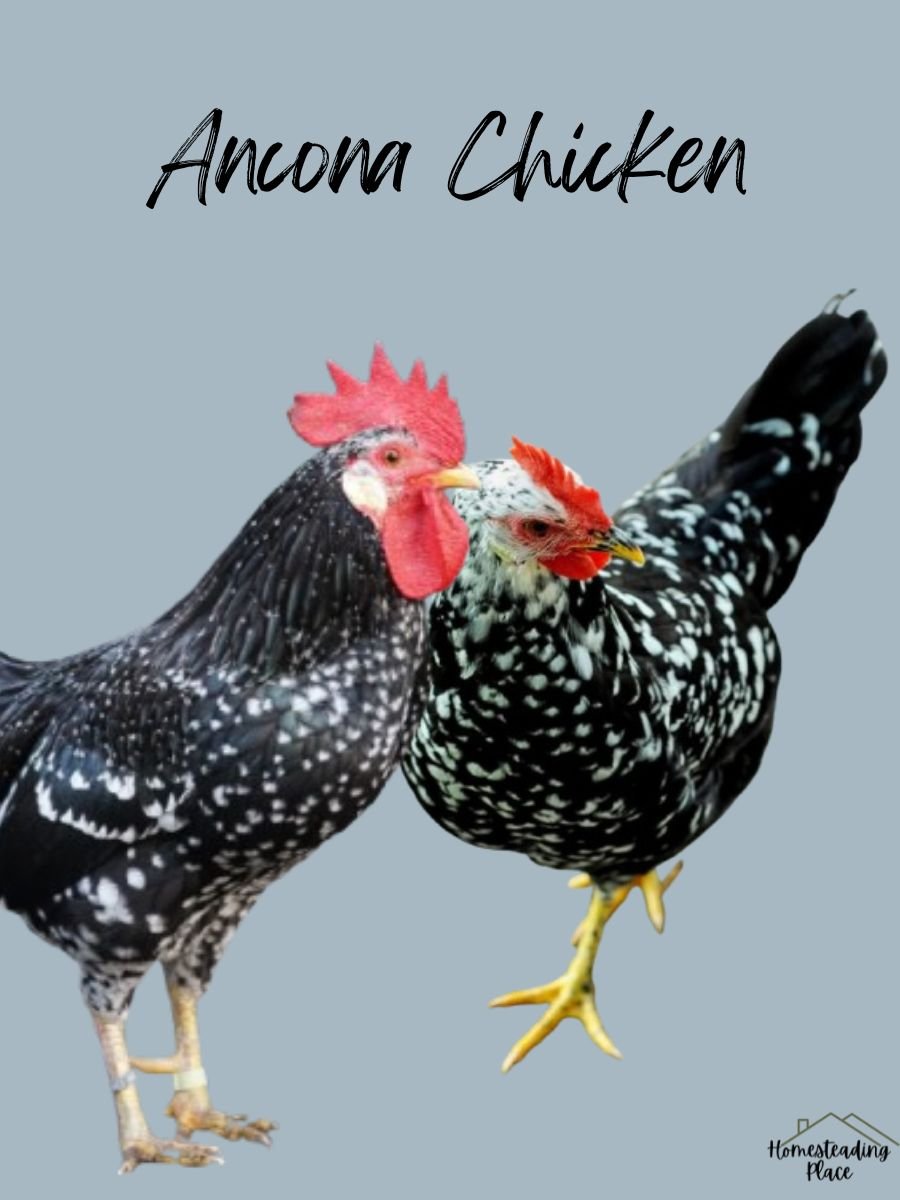
You can tell these smaller Bantam chickens with white ‘V-shaped’ spangles at the end of ‘beetle-green’ black plumage.
These birds feature legs with yellow and white earlobes. They weigh around 12-13 pounds for roosters and 8-9 pounds for hens.
Do you know Ancona chickens came from England to the United States around 1888?
These lightweight birds mature in 4-5 months. They lay between 180 and 220 eggs per year, consistently for 4 years.
Origin: Italy
Temperament: Active, rustic, lively and hardy
Characteristics: Excellent egg layers, mottled black-and-white plumage, good foragers
Ideal for: Free-range settings and areas with mild climates
Uses: Egg production, especially white eggs
2. Austra White
Austra Whites are known for their sleek, whitish feathers and tidy, uniform appearance.
They are a crossbreed of a Black Australorp rooster and a White Leghorn hen. For the first time, they were bred in Oregon in the early 1900s.
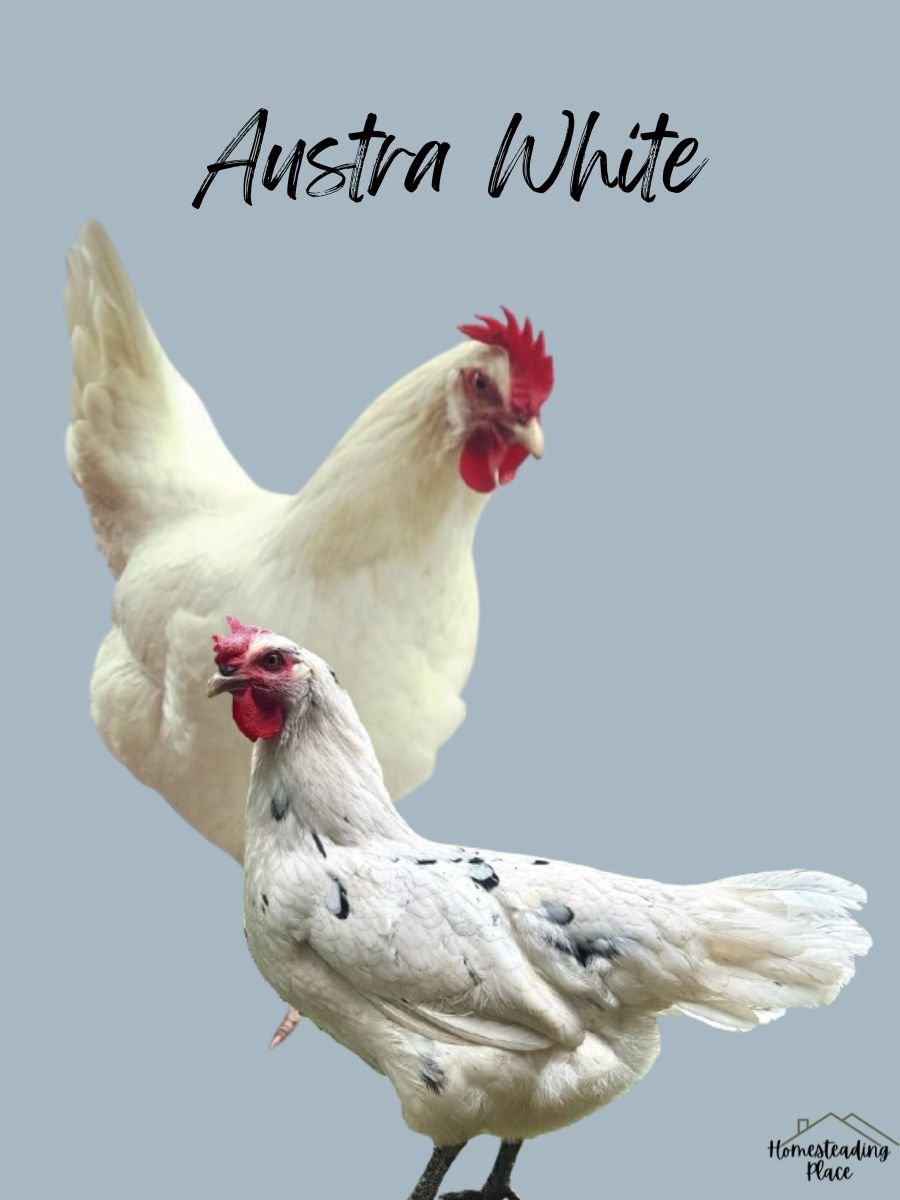
These chickens weigh 6.5 lbs for roosters and 5 lbs for hens.
You can tell Austra White males with pure white and bright red single, while hens have white plumage with a few black spots.
They mature at 18-28 weeks, and hens give 220-300 large, light brown to off-white eggs per year.
Origin: United States (hybrid)
Temperament: Friendly, calm, docile, easy to handle
Characteristics: Active chickens, like to forage, prolifi egg layers.
Ideal for: Beginners seeking high egg production
Uses: Egg production
3. Barred Rock
It is a medium-sized breed of chicken with 9.5 lbs for roosters and 7.5 lbs for hens on average.
They are a crossbreed between Dominique chickens and Black Javas.
You can expect them to lay 3-4 eggs per week once they enter their maturity around 16-24 weeks. Thus, your coop finishes producing 200-250 eggs from a single bird per year.
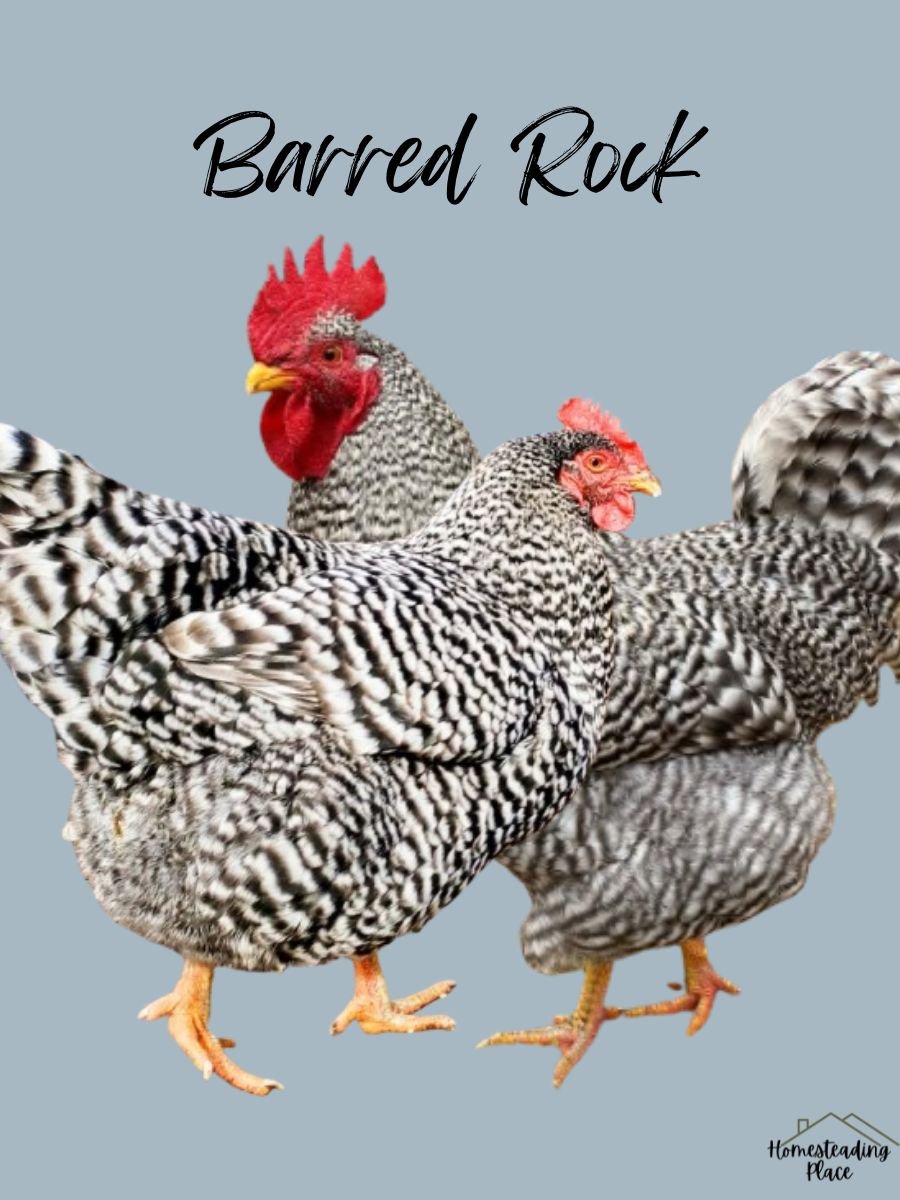
As the name suggests, the chickens have black and white striped feathers.
Also, they own a decent deep, full breast, a long, broad back and yellow skin and legs.
Origin: United States
Temperament: Calm and sociable, easy-going
Characteristics: Dual-purpose breed, lays brown eggs, hardy, and broody.
Ideal for: All climates and small farms
Uses: Eggs and meat
4. California Gray
Barred Rock from Plymouth chickens are lookalikes to California Gray chickens. But California has a boly structure more like Leghorn chickens.
Also, Californias are smaller chickens than Barred Rock, weighing 4.4 – 5.5 lbs.
Though they are small in size, they are excellent layers. They start laying eggs around 20-24 weeks of age and produce 300 large white eggs per year.
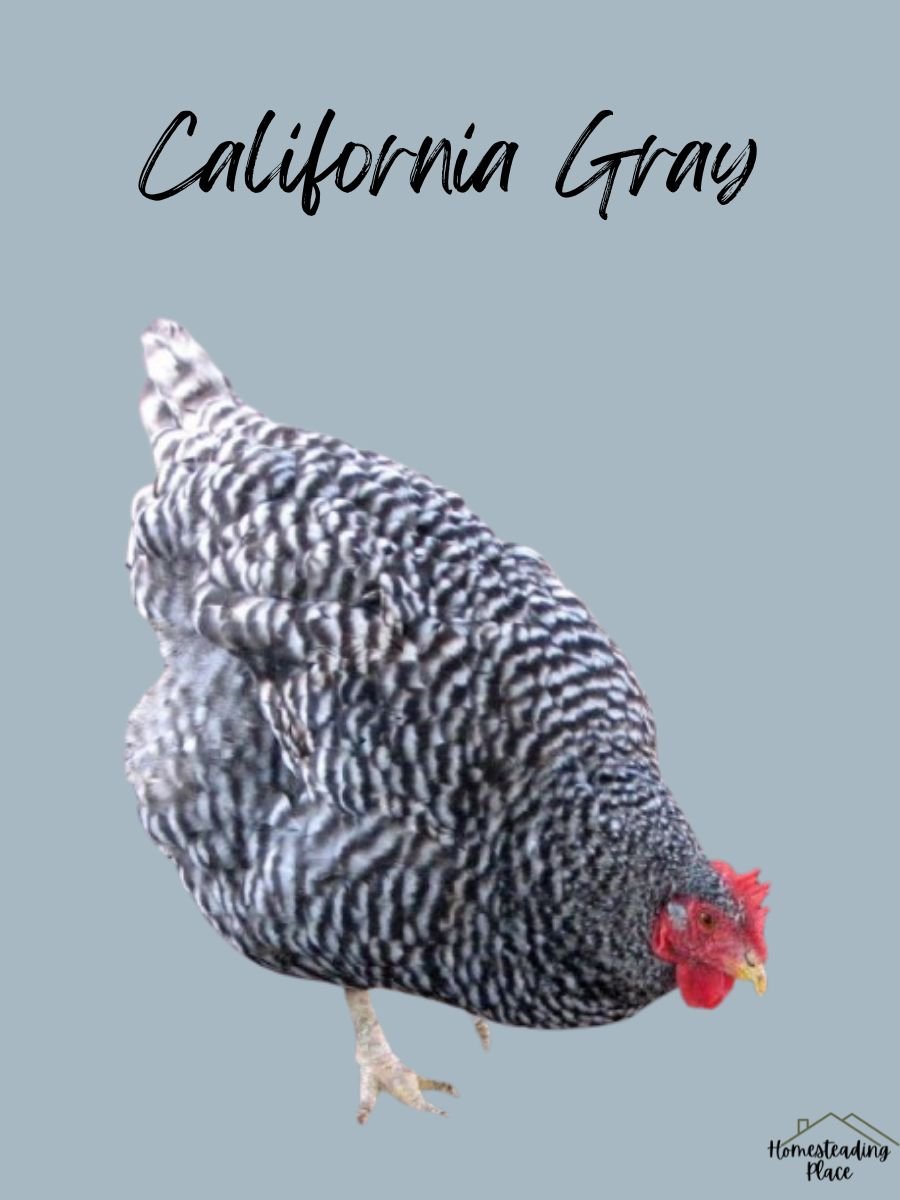
Californias are black and white barred birds. But females have darker black feathers than roosters.
Origin: United States
Temperament: Docile and friendly.
Characteristics: active, alert, and good foragers, excellent egg layers
Ideal for: Urban and rural homesteads
Uses: Primarily egg production
5. Colombian Wyandotte
Colombians are from Wyandotte white and black chicken breeds.
It is also a hybrid of White Wyandottes with barred Plymouth Rock.
Chickens are medium to large breed that weigh roosters for 8 lbs and hens for around 6 lbs.
They are white birds with black feathers around the neck, wings, and tail and silvery white edging feathers. This makes a crisp contrast in the white appearance.
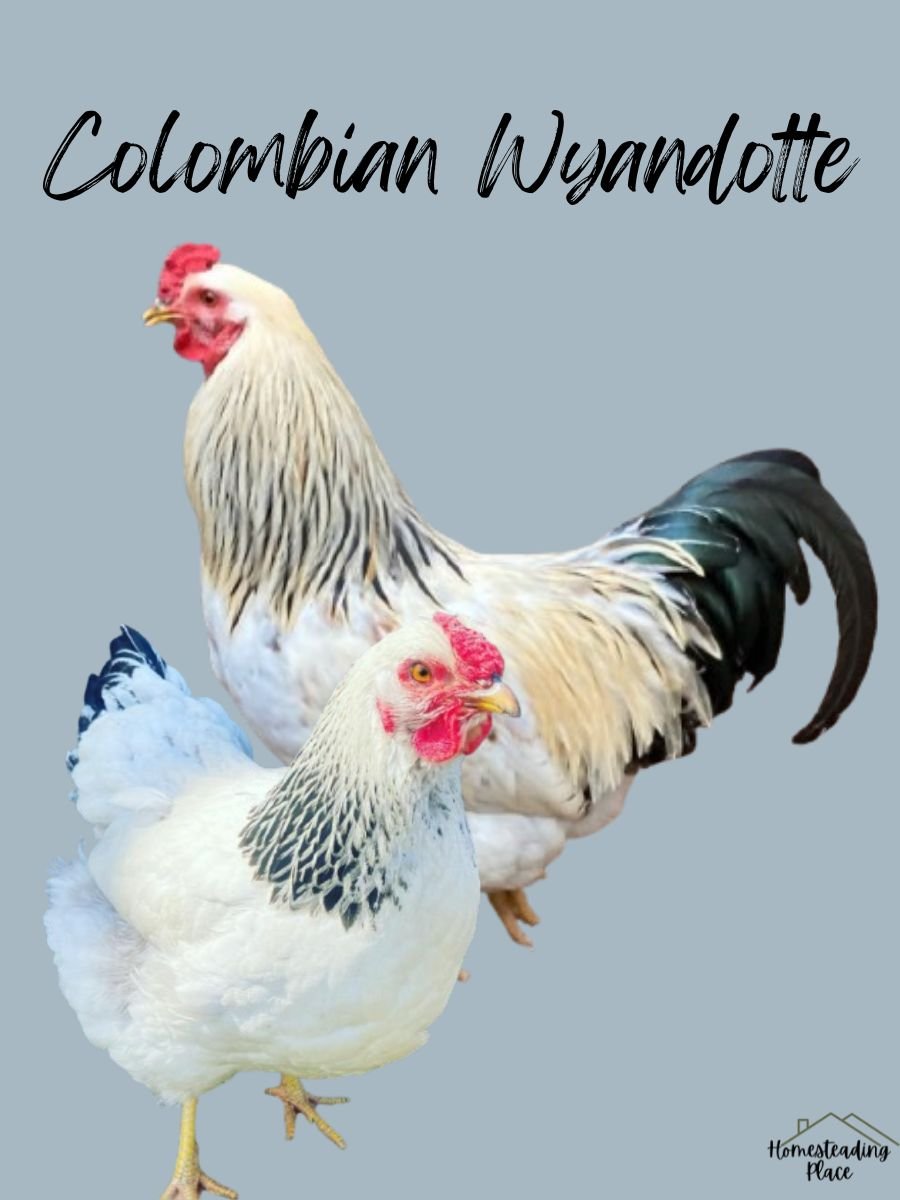
Their well-rounded bodies and yellow skin make excellent table birds.
They are also known for laying 150 to 200 brown eggs per year. So, you can expect them to have 3 to 4 eggs per week after 4 to 6 months or 7-10 months.
They are intelligent and respond to positive reinforcement.
So you can train them with some simple commands for easy raising. Though they are controlling when nesting, they are gentle.
Origin: United States
Temperament: Friendly and calm, smart
Characteristics: Good forager, cold hardy
Ideal for: Cold climates and family-friendly farms
Uses: Eggs and meat
6. Dominique
Dominique is also a black and white barred bird that was bred early in the 1820s in an American farm.
This heritage breed provides medium size chickens weighing 5–7 lbs.
You can tell these chickens with irregularly striped black-and-white plumage and rose comb.
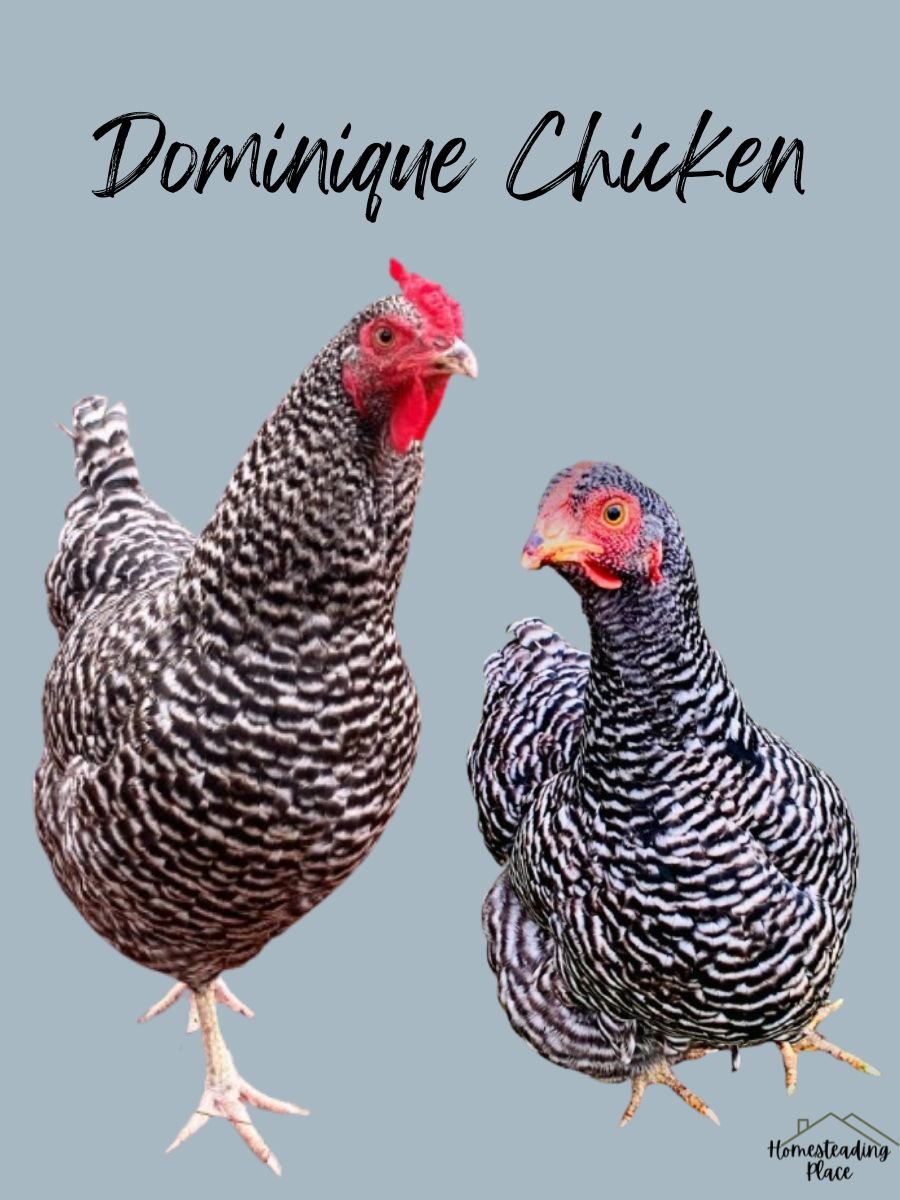
Dominique hens start laying eggs around 20 to 24 weeks. They are expected to yield 230-275 medium-size eggs a year. Also, eggs are beautiful in light-to-dark brown shade.
They live for 5-8 years.
Origin: United States
Temperament: Gentle and hardy, easy to work with and show
Characteristics: Excellent foragers, hatch well, feather early, early maturity
Ideal for: Free-range system and confinement
Uses: Dual-purpose breed
7. Exchequer Leghorn
Leghorns are known for producing more than 300 nice large white eggs per year.
Their feed-to-laying eggs ratio is very high, so you can expect at least 5 white eggs per week.
They eat little food, so they are lightweight, only weighing around 5 lbs for rootsters and hens 3.5 lbs for hens.
You can identify this pure breed with a mix of black and white feathers. Chickens are dark covered with a few white feathers sporadically.
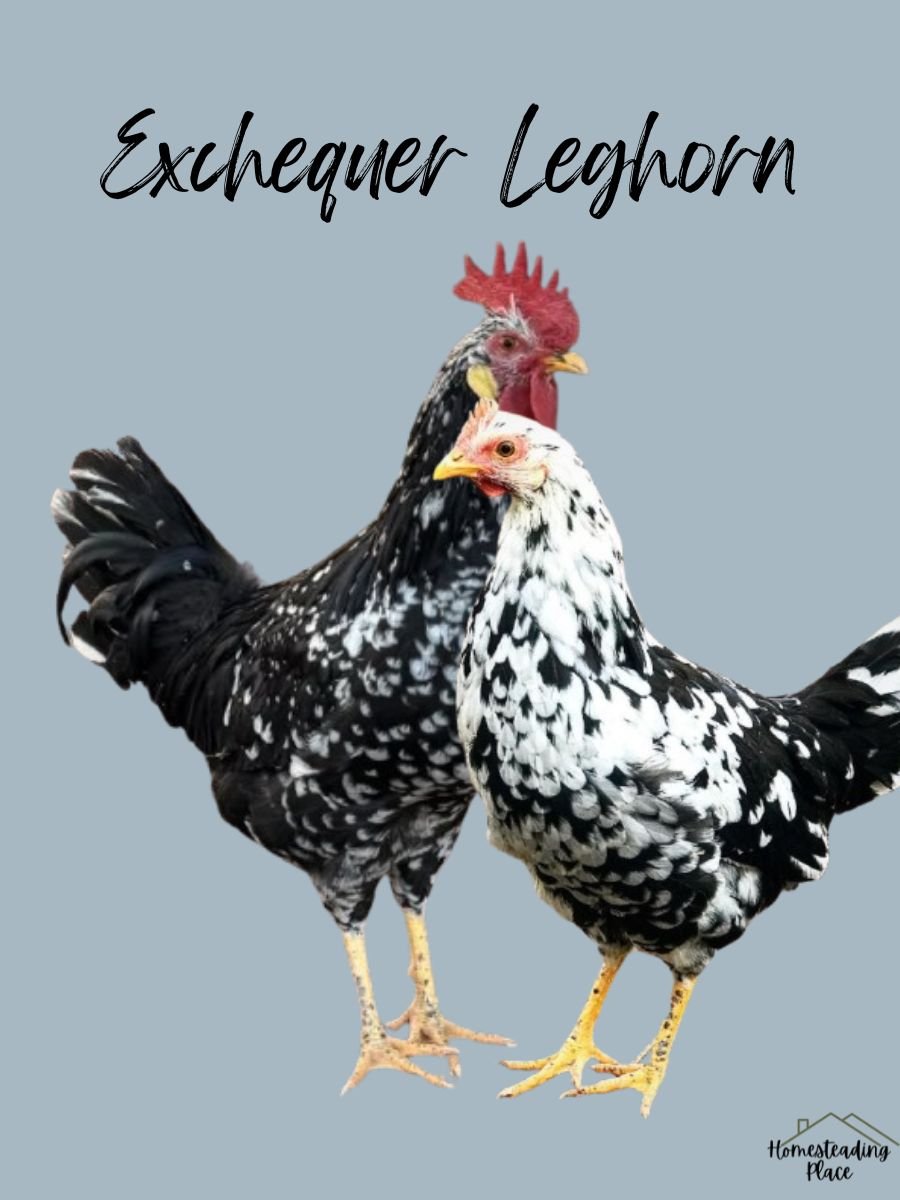
Hens make good layers but rarely go broody. They start to lay eggs around 22 weeks.
Exchequer Leghorn are attractive and prefers a free range system and lives for 5-7 years.
You can also dress these chickens around 16 – 20 weeks and sell them in between.
Origin: Italy
Temperament: Energetic and active, attractive, hardy, non-sitters
Characteristics: Prolific layer
Ideal for: High egg production in warm climates
Uses: Egg production
8. Hamburg
Hamburg chickens are attractive birds thanks to their white plumage with occasional black spots and black-white feathers. The rose comb and wattles, and white earlobes also ornate more.
They are time and stylish and wild in nature. Thier full of energy land ove for adventure stands out among the domestic birds.
Males often look graceful, spangling on the tail feathers. You can tell chickens with strong and upright appearance.
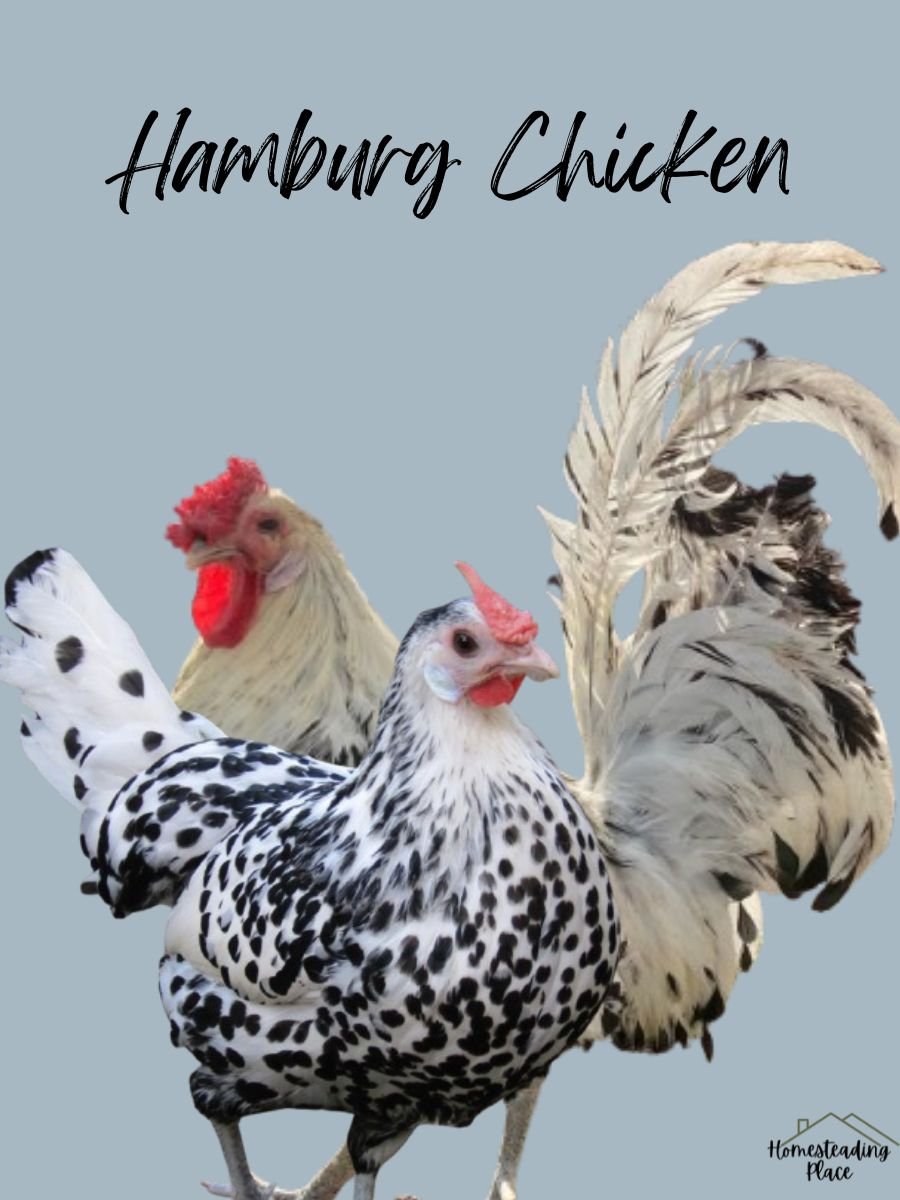
The fowls are small chickens weighing 4 – 5 lbs with fine bones.
They mature around 4-5 months. They mature faster and lay when young. Hens can give 120-250 small-to-medium-size white eggs every year and for a long time.
Origin: Mediterranean area
Temperament: Active, flighty, beautiful, penciling breed
Characteristics: White body with black spots, good layers of small-medium white eggs
Ideal for: Experienced keepers with enough space
Uses: Eggs and ornamental purposes
9. Lakenvelder
Lskenvelders can be an alternative to Hamburg chickens, which are also small and weigh only 4 – 5 lbs.
They are one of the small white and black chicken breeds.
Though they are not fleshy, I find their meat delicious and notable. They have white skin and round and plump breasts, which resemble gamebirds.
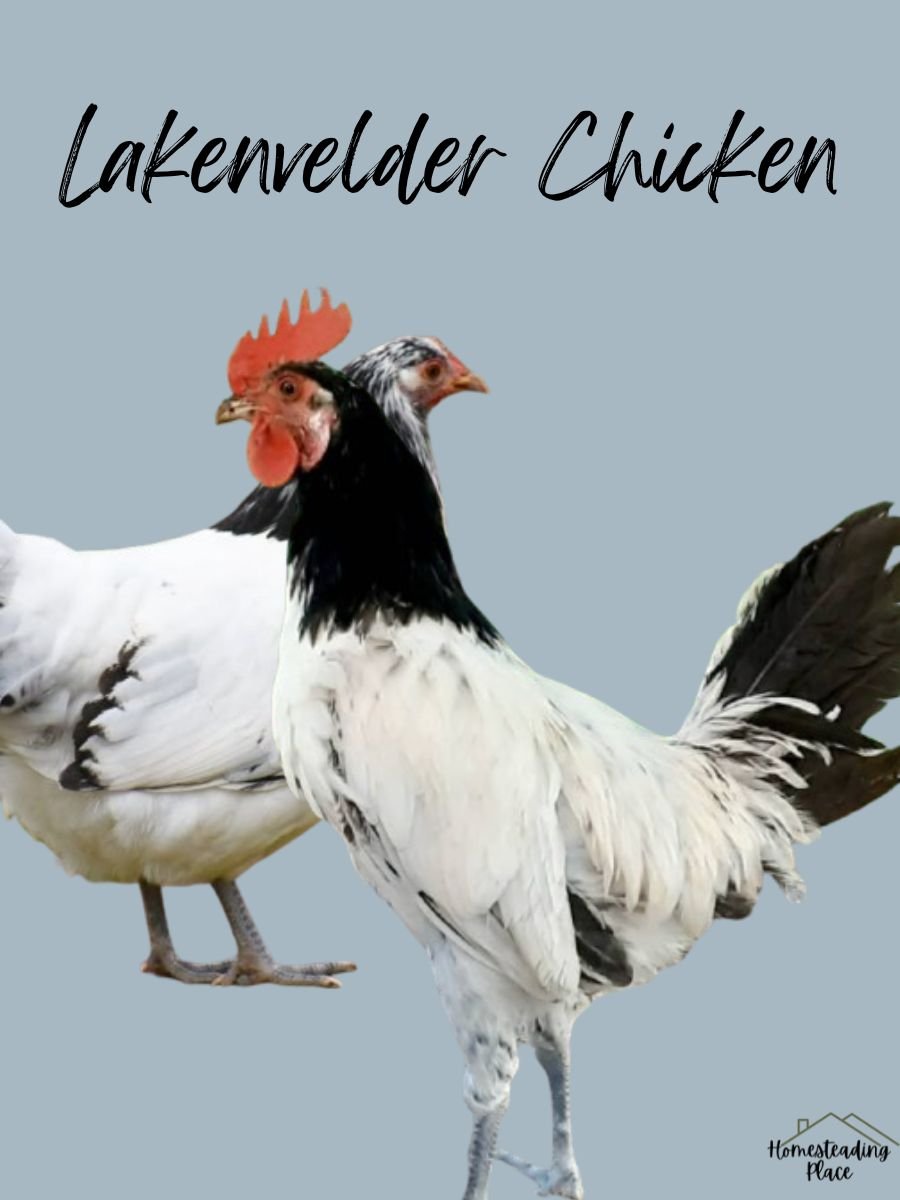
Besides, Lakenvelders display striking black and white plumage with dark feathers grown on necks and tails.
They are active and wild and like to forage for food. They also tend to fly at their risk, so predators rarely catch them.
Hens often begin to lay eggs at the age of 5 to 7 months. They are expected to yield 150-200 small to medium white or tinted eggs per year.
Though they are moderate layers, they are not broody.
They are great foragers, very active, and vary wary. Their active and wary nature is not unlike that of the Leghorn chicken breed.
Origin: Netherlands/Germany
Temperament: Alert, active, tightly,
Characteristics: Light-boned breed, black neck and tail with white body, hardy, moderate layers
Ideal for: Warm climates and experienced keepers
Uses: Eggs and ornamental purposes
10. Magpie
Magpie is also one of the white and black chicken breeds, which weigh only 4-7 lbs.
They have black bodies and silver or white necks and chests, hence the name. However, the amount of light feathers varies among individuals.
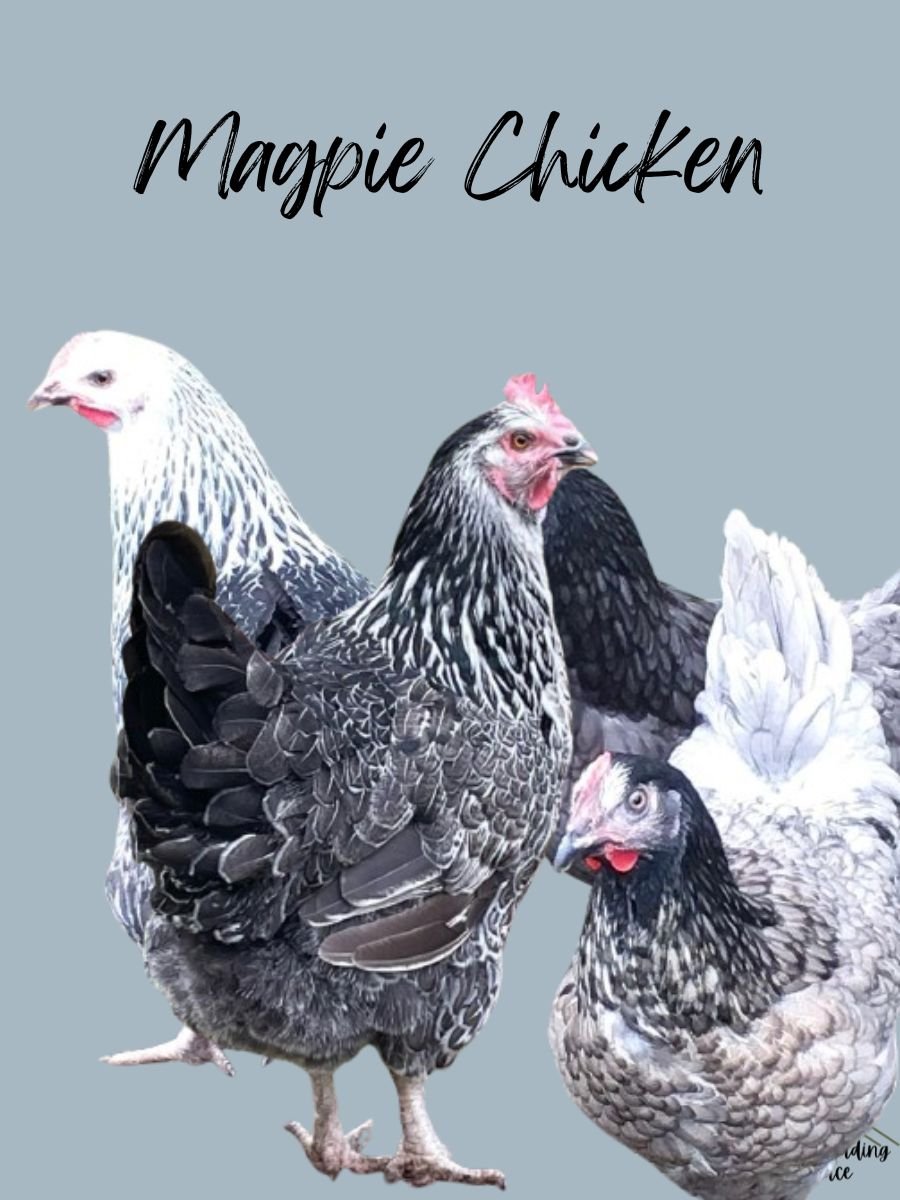
The feathers on their tails and wings are iridescent and show green and purple shades in the sunlight.
They start laying eggs after 6 months of age. The expected brown egg yield 220 and 240 per year.
But many keepers claim to have 250 – 300 medium-large sized eggs from hybrid Magpie.
Origin: United Kingdom.\
Temperament: Friendly and inquisitive
Characteristics: Black-and-white plumage resembling magpie birds, easy to handle good layers
Ideal for: Urban and backyard settings
Uses: Egg production
11. Marans
I like Marans for their multi-color eggs, such as chocolate brown, coppery brown, reddish or russet brown.
But they also make medium sized table birds weighing 6.5 to 8 lbs.
You can tell Marans chickens with black plumage that have sparking green sheen and copper flecks. Their feathers are soft, which makes it easy for keepers to pluck out.
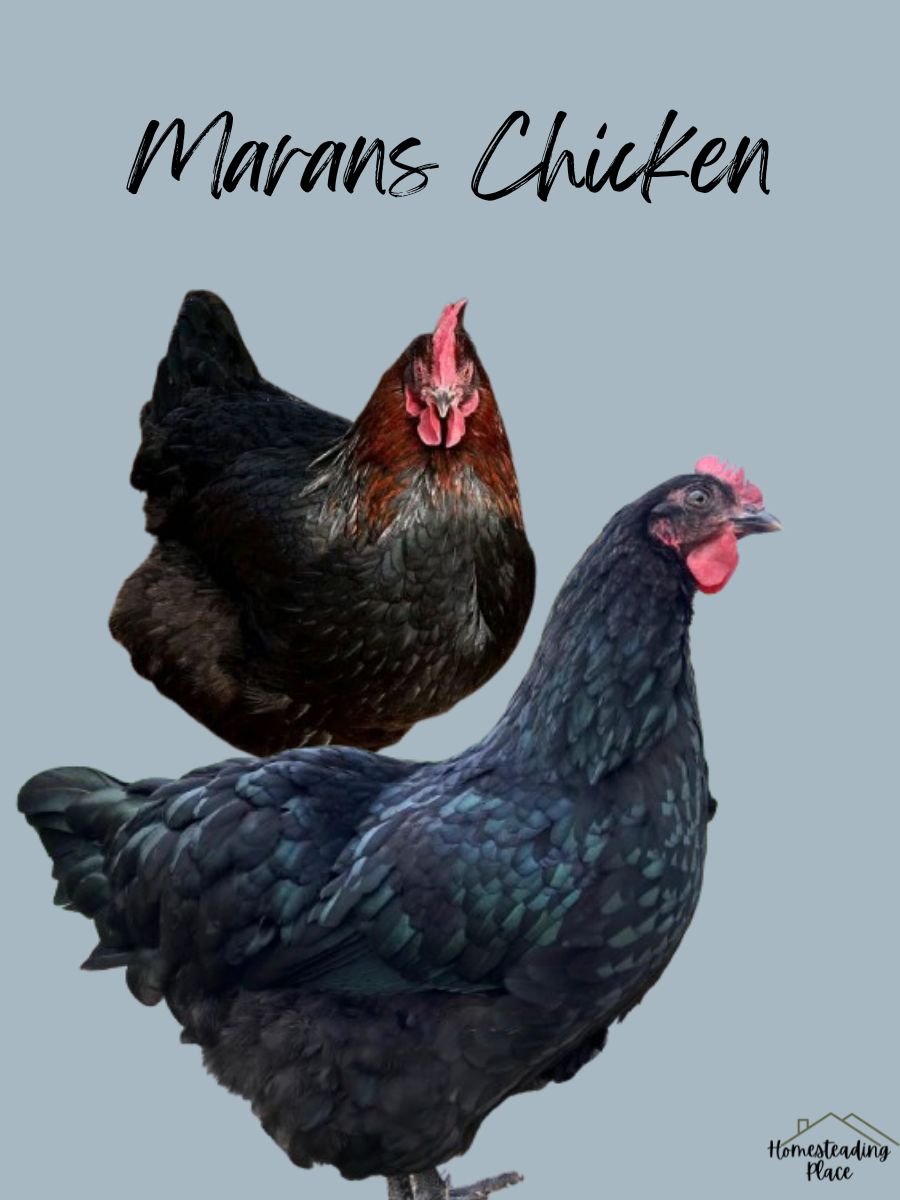
Also, keepers can handle them well with little effort.
Marans are slow to mature chickens. Keepers expect them to lay around 6-7 months of age.
The hens can give 3 eggs per week and a total of 150-200 eggs per year.
You can raise these chickens in confinement and on the free range.
Origin: France
Temperament: Calm, social, hardy
Characteristics: Black-and-white cuckoo plumage, dark brown eggs
Ideal for: Egg enthusiasts seeking unique eggs
Uses: Dual purpose (eggs and meat production)
12. Mottled Houdan
At first glance, you won’t see Mottled Houdan eyes because of feathers grown all over the body.
They have full crests, beards, muffs, and combs. They have small earlobes and wattles but are all covered in crests and beards.
You can imagine them to have a striking green-black background with white mottles. The chickens also features V or leaf shaped comb, five toes and crested head.
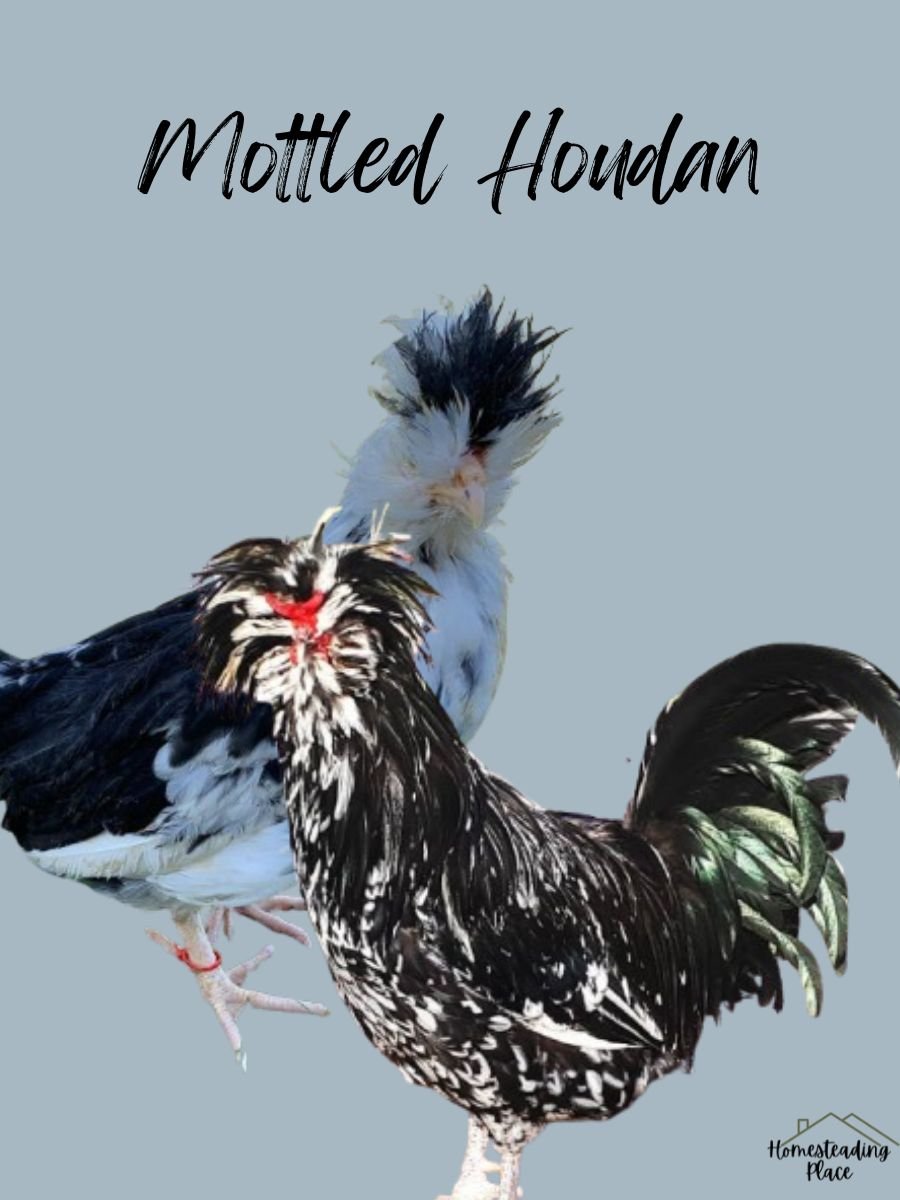
Their unusual appearance makes them good ornamental bird in the farm or homestead.
Mottled Houdans grow around 5.5 – 8 lbs at adult age. They mature around 14-20 weeks and make excellent layers with a yield of 150-230 large white eggs per year.
This makes them equal to Leghorn chickens in dry and warm conditions.
They are also decent winter layers and live for around 8 years on average.
If you raise Mottled Houdans, install a rooster in a large flock of hens because they are ardent and very fertile.
Also, they fatten easily. Though they produce less offal than a Dorking chicken, you may like them to be on the table.
Origin: France
Temperament: Friendly, docile
Characteristics: Black plumage with white spots, crested head, hardy, winter layers
Ideal for: Small farms and urban settings
Uses: Eggs, meat, and ornamental purposes
13. Orpington (Black and White Varieties)
If you’re a butcher, you may know Orpington well.
Orpingtons make excellent broilers for meat. 2 – 2.5 lbs in 8 to 10 weeks and roasting chickens within 5 months. Also, they make excellent table birds in old age.
They weigh 10 lbs for roosters and 8 lbs for hens.
You can identify this breed by full-sized body-growing under feathers with black with a green sheen. They have broad, deep breasts, a curved back, and short legs,
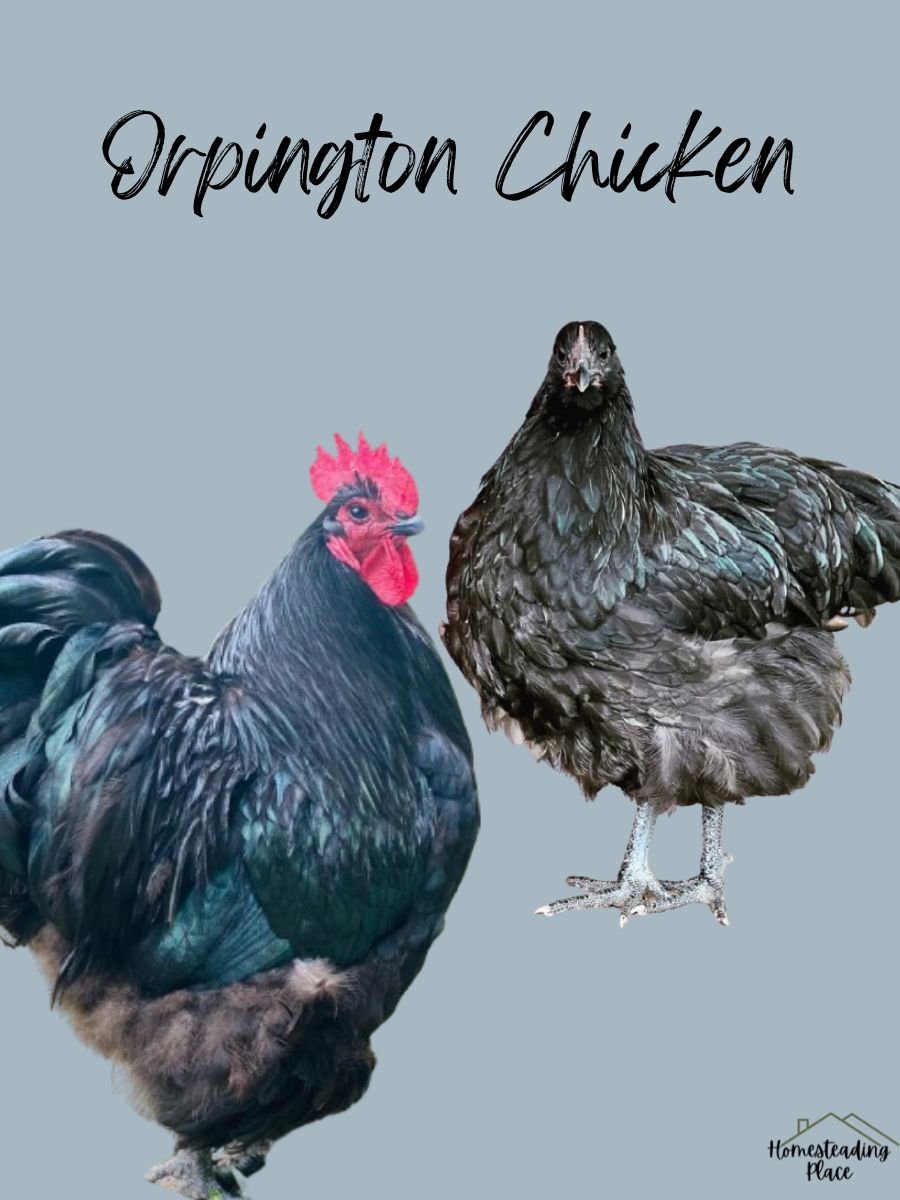
Also, their thighs are covered with thick feathering. They have fluffy down feathers, making them full-sized birds.
Orpingtons are standard layers that start to give eggs after 24 weeks. You can expect hens to yield 200 to 250 egg,s large light to dark brown eggs.
As they tend to go broody, they make good mothers.
If you don’t want chickens to lay eggs, you can process them within 22 weeks.
The chickens are one of the largest bantam black and white breeds, which live for 8 – 10 years.
Origin: England
Temperament: Docile and friendly
Characteristics: Dual-purpose breed, fluffy feathers, giant-sized bird, excellent layers
Ideal for: Beginners and family farms
Uses: Excellent eggs and meat production
14. Plymouth Rock (White)
Plymouth Rock makes fluffier chickens in the flock when you see them, especially in winter.
Their fluffy plumage helps them survive winter or cold climates easily.
They boast a decent, deep, full breast and long, broad back with moderate comb, yellow skins, and legs. A deep, full abdomen is a sign of sound layers.
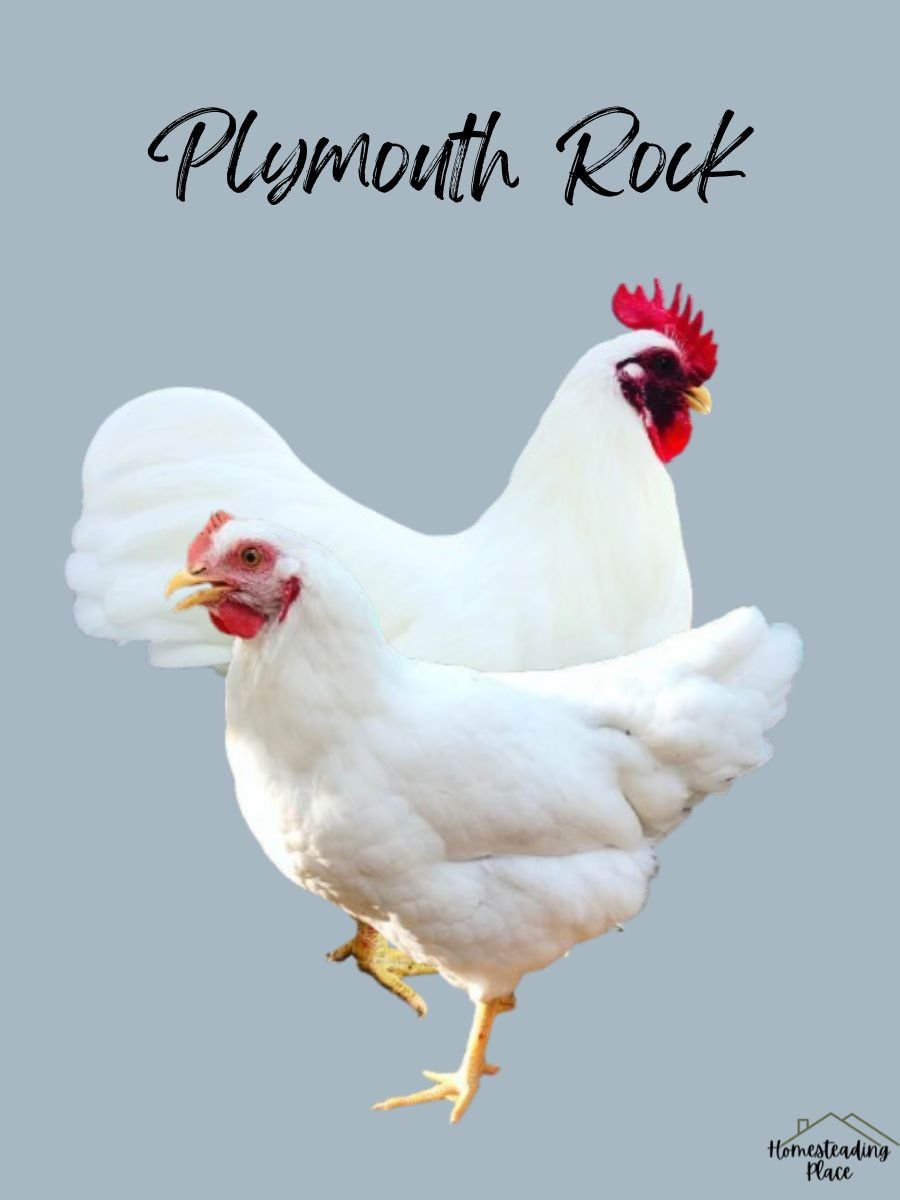
White Rock are believed to be standard-sized chickens, but they can weigh around 7 – 9.5 lbs. That’s perfect for the dinner table.
These chickens are dual-purpose birds. So, hens start laying 20 to 24. Roughly 4 – 5 eggs per week and a total of 200 – 280 brown eggs per year.
Origin: United States
Temperament: Friendly, calm, broody, good sitter
Characteristics: Easy to manage,, early-feathering cold hardy, great layers of brown eggs
Ideal for: Keepers seeking versatile chickens
Uses: Eggs and meat
15. Andalusian
Andalusian is a Mediterranean breed that has dark and laced plumage. In fact, they belong to sleek white and black speckled chicken breeds.
Sometimes, they are considered chickens with blue plumage, which is individually laced with dark blue or black feathers.
They also feature white, oval-shaped earlobes, black or slate blue legs with five points, and a rose comb.
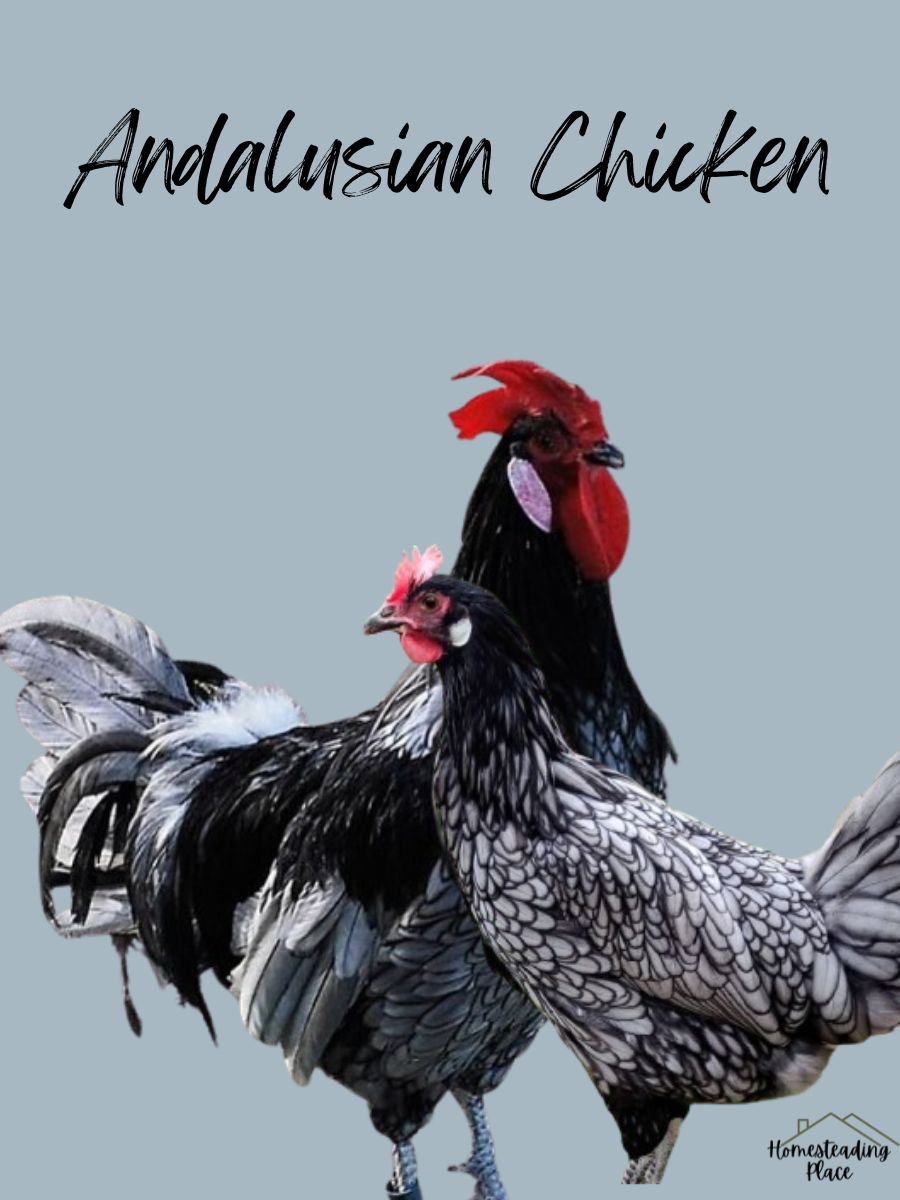
These chickens are small, energetic, thick, feathered birds. They are also noisy and rarely go broody.
The breed has non-sitting egg-laying hens that produce 160-200 medium to large white eggs per year. They are also excellent winter layers.
You can expect hens to lay around 4 to 8 months.
These birds are standard size, weighing 5.5 – 7 lbs. They are white skin and non-sitting egg-laying breed.
Origin: Spain
Temperament: Active and friendly
Characteristics: Non-sitting egg-laying breed, moderate layers
Ideal for: Warm climates and ornamental purposes
Uses: Eggs and display purposes
16. Sussex (Light)
Light Sussex is a large bird with a rectangular shape. Males weigh around 10 – 11 lbs, while females hold 7 – 8 lbs.
They are known for a white body with a black tail. Sometimes, they also develop black wing tips.
Their make is covered with white plumage with black strips to give a striking appearance. They are a standard breed with a long back and moderate tail.
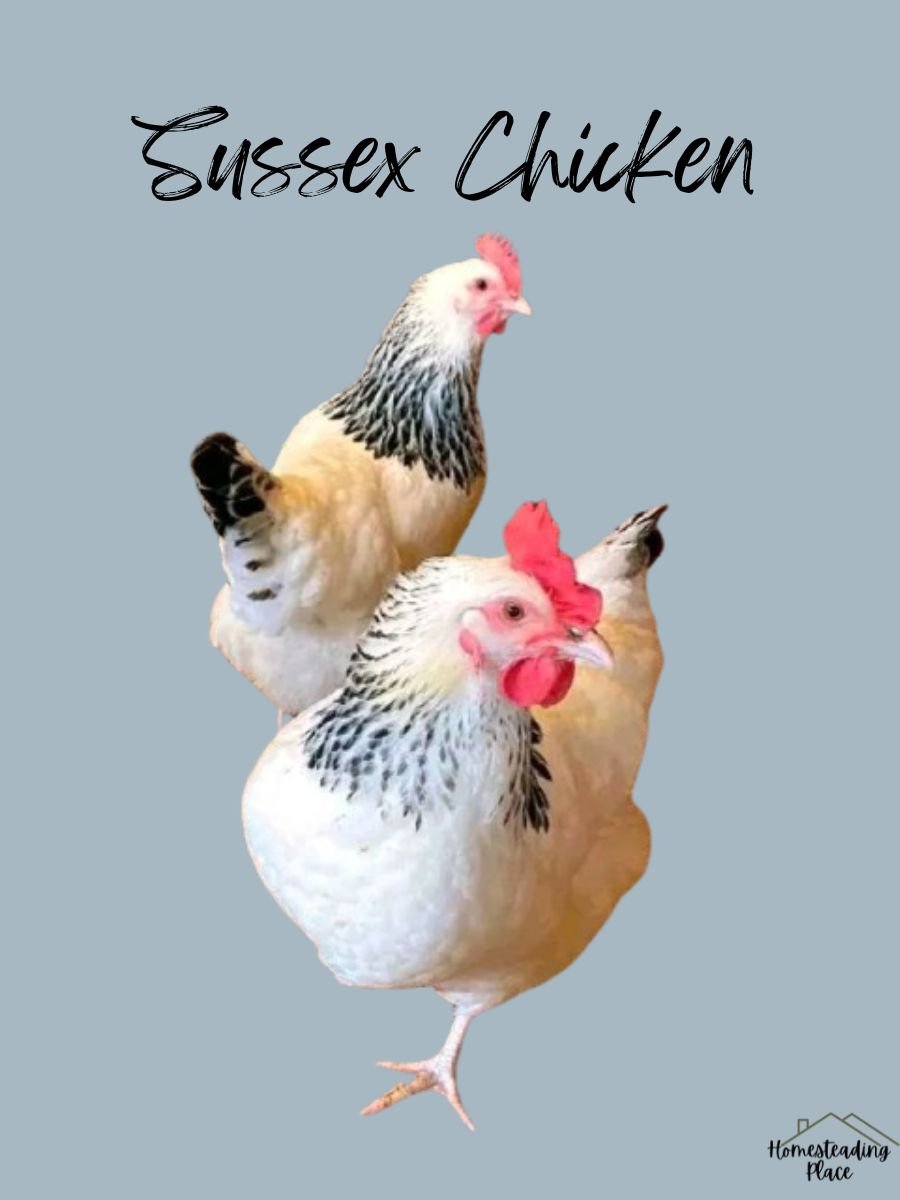
Keepers expect these chickens to mature and lay eggs between 16 to 20 weeks old. They produce 200 – 260 large, light-brown eggs per year.
Besides, they tend to go broody and make good mothers.
You can raise them in confinement. But they appreciate if they are taken to free range or area to roam during once a week.
Origin: England
Temperament: Calm, friendly, broody
Characteristics: White feathers with black neck markings, good layers and mothers
Ideal for: Family-friendly farms
Uses: Dual purpose (eggs and meat)
17. Faverolles
You will notice a beard and muffs on both roosters and hens of Faverolles. Due to this, a wattle is rarely visible.
The chickens own black plumage with some white feathers grown on the body and legs. If not, they have white plumage with some black feathers, so the ratio is high, 65 – 35.
However, Salmon Faverolles have a white and straw-colored breast with hints of pinkish-orange feathers. The plumages are fluffy and light in the shade of straw and cream.
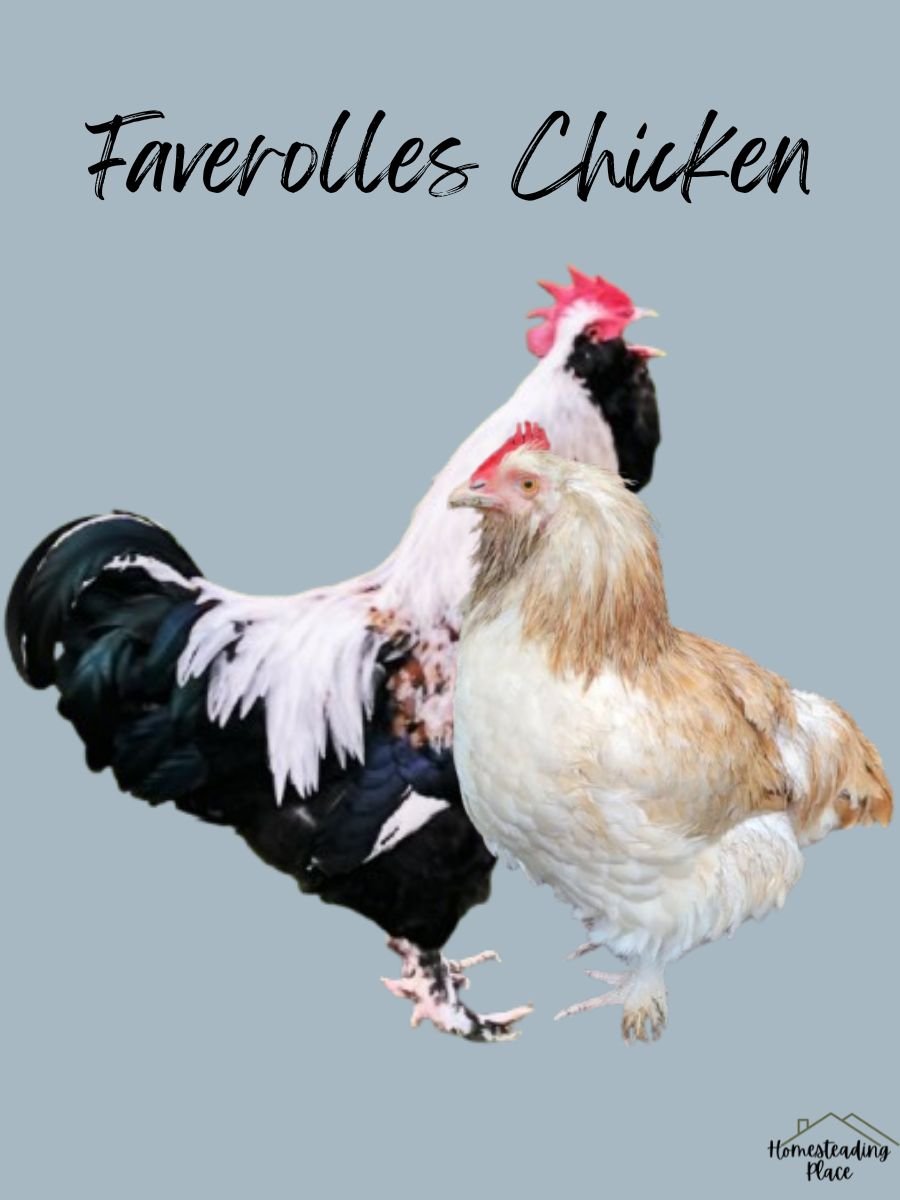
Anyway, males have brighter colors than females in their hackles and tail feathers.
They can weigh around 6.5 – 10 lbs at adult age. Once they are 19 weeks old, they start laying eggs. You can expect them to produce tinted 150 to 240+ eggs per year.
Hens are also excellent sitters and mothers.
My friends often raise Faverolles for fine broilers and roasters.
Origin: France
Temperament: Active, gentle, sociable,
Characteristics: Fluffy black-and-white feathers, a bird with a beard and feathered legs, early maturity, hardy
Ideal for: Cold climates and backyard settings
Uses: Eggs and meat
18. Brahma (Light)
Brahma chickens are one of my favorites for the meat quantity from their giant size. Males weigh 12 to 18 lbs, while females hold 9 to 12 lbs.
The standard chickens are at least 10 lbs.
They are often called King of Chickens for their colossal size.
You can easily identify them with pure white, with black tips on the neck, wing feathers, and tail. They also have feathered legs.
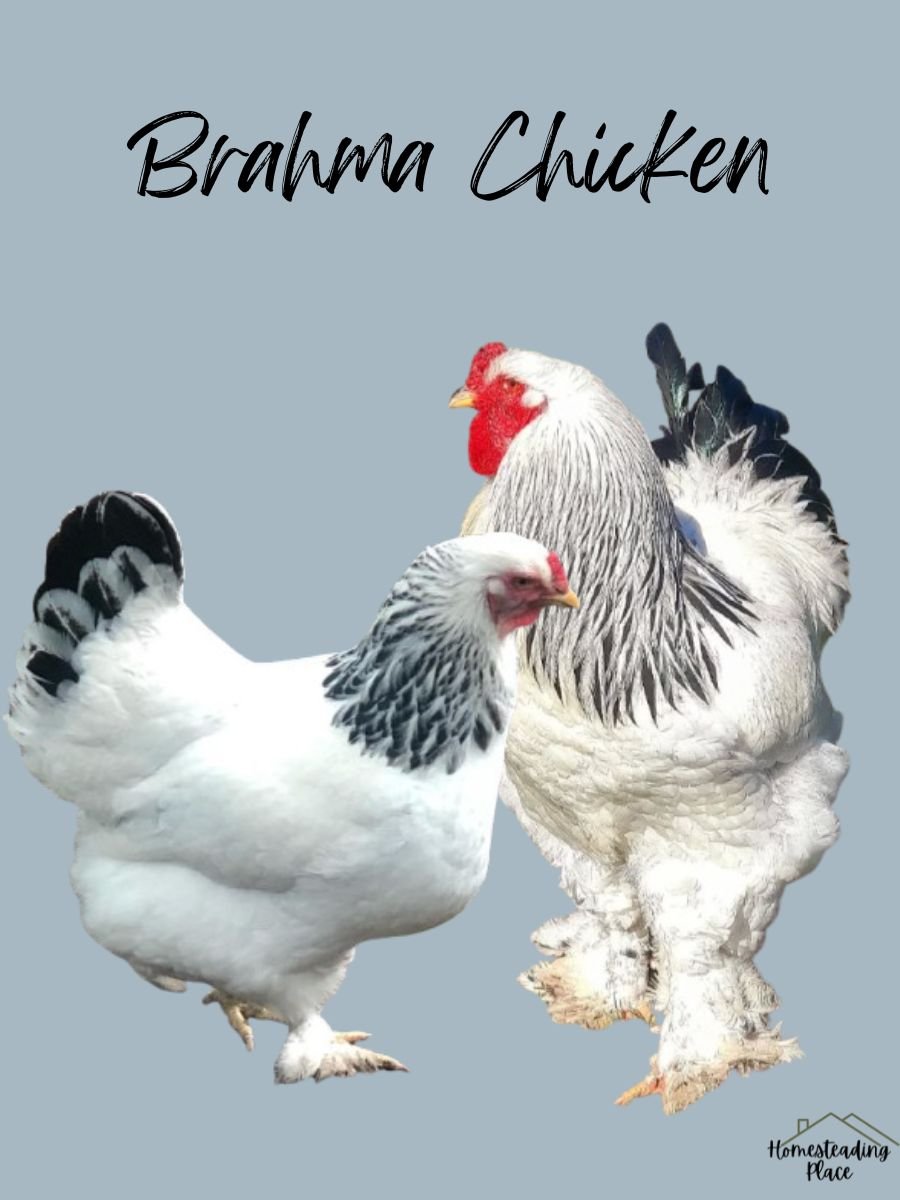
Brahmas are calm and docile due to their giant size, so they are easy to raise. Also, they are not flighty or skittish and don’t show aggressive behavior.
However, these birds can raise the cost of feeding. Also, small chickens find it hard to hold the chickens.
Chickens are good layers based on their size. Once they are around 25-28 weeks of age, they start laying eggs. The owners can expect 150-200 large, medium-brown eggs per year.
They are also winter layers, which give eggs from October to May.
You can also harvest Brahma chickens in 8 – 10 weeks.
Origin: India/China
Temperament: Gentle giants, docile, non aggressive
Characteristics: White feathers with black neck and tail, good layers, excellent meat production, cold hardy
Ideal for: Large homesteads and colder regions
Uses: Meat and eggs
19. Campine
Campine chickens are smaller than the Braekel. They only weigh around 4 – 6 lbs.
These chickens have solid-colored plumage on solid and head areas and grow barred feathers of black and white colors.
They look similar, both male and female lacking sickle, hackle, and neck feathers at the upper chest and tail. Only you can identify them with brightness of color and size.
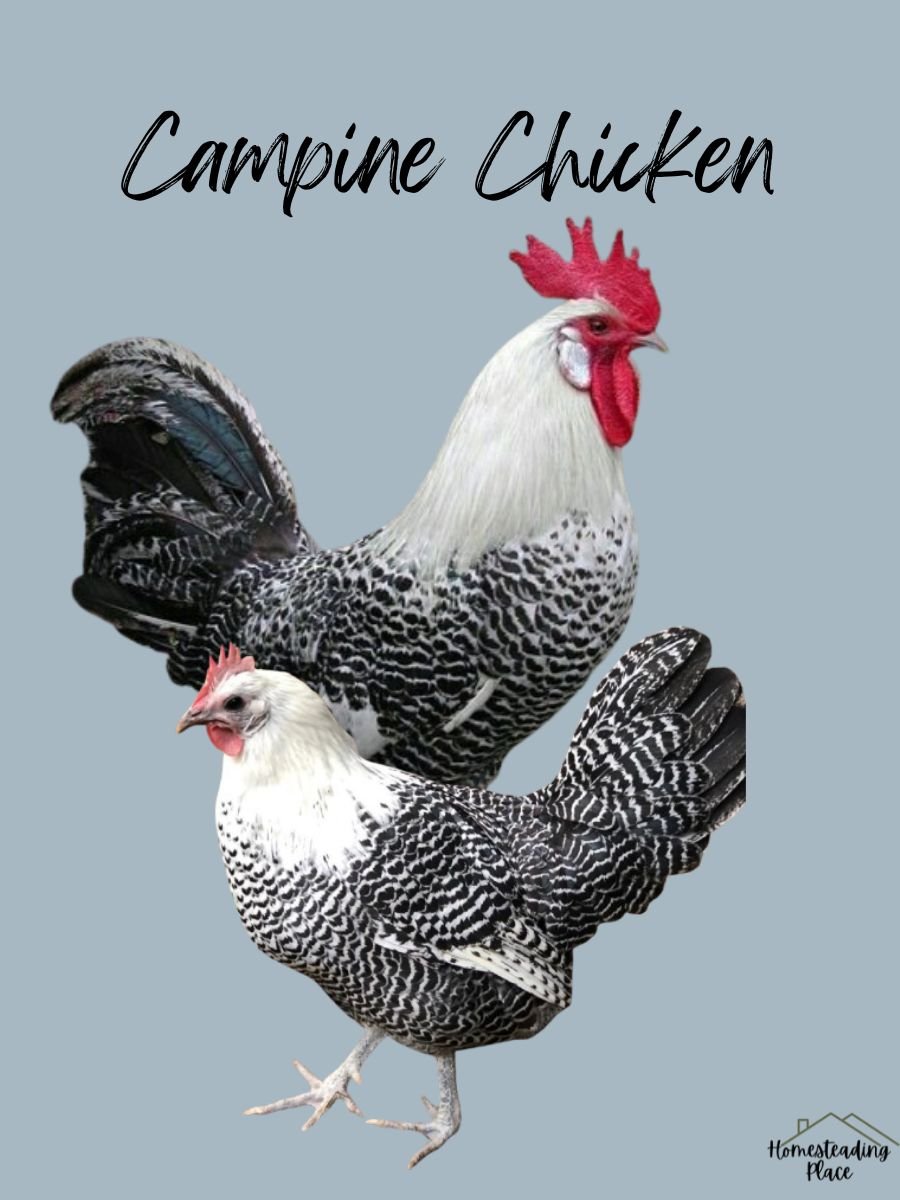
They are one of the rarest domestic white and black chicken breeds that are active and calm in nature.
You can make them broiler at the age of 8 weeks. They start laying eggs around 16 – 20 weeks, yielding around 140-200 white, medium size eggs.
Though they are good layers, they do not go broody necessarily.
Origin: Belgium
Temperament: Active, curious, a bit flighty, hardy
Characteristics: Black-and-white striped feathers, good layers, don’t go broody.
Ideal for: Experienced chicken keepers
Uses: Eggs and ornamental purposes
20. Swedish Flower Hen
This a small beed from southern Sweden, which grows around 4.4–6 lbs.
The good thing is that the chickens are in a floral plumage pattern with a white spot at the tips of each feather.
However, the pattern is complex and may showcase an image of a tangle of wildflowers. Have you checked it?
Chickens are nice and friendly, remain poised and confident around people, and don’t show aggressive behavior toward keepers. So they’re easy to care for and raise.
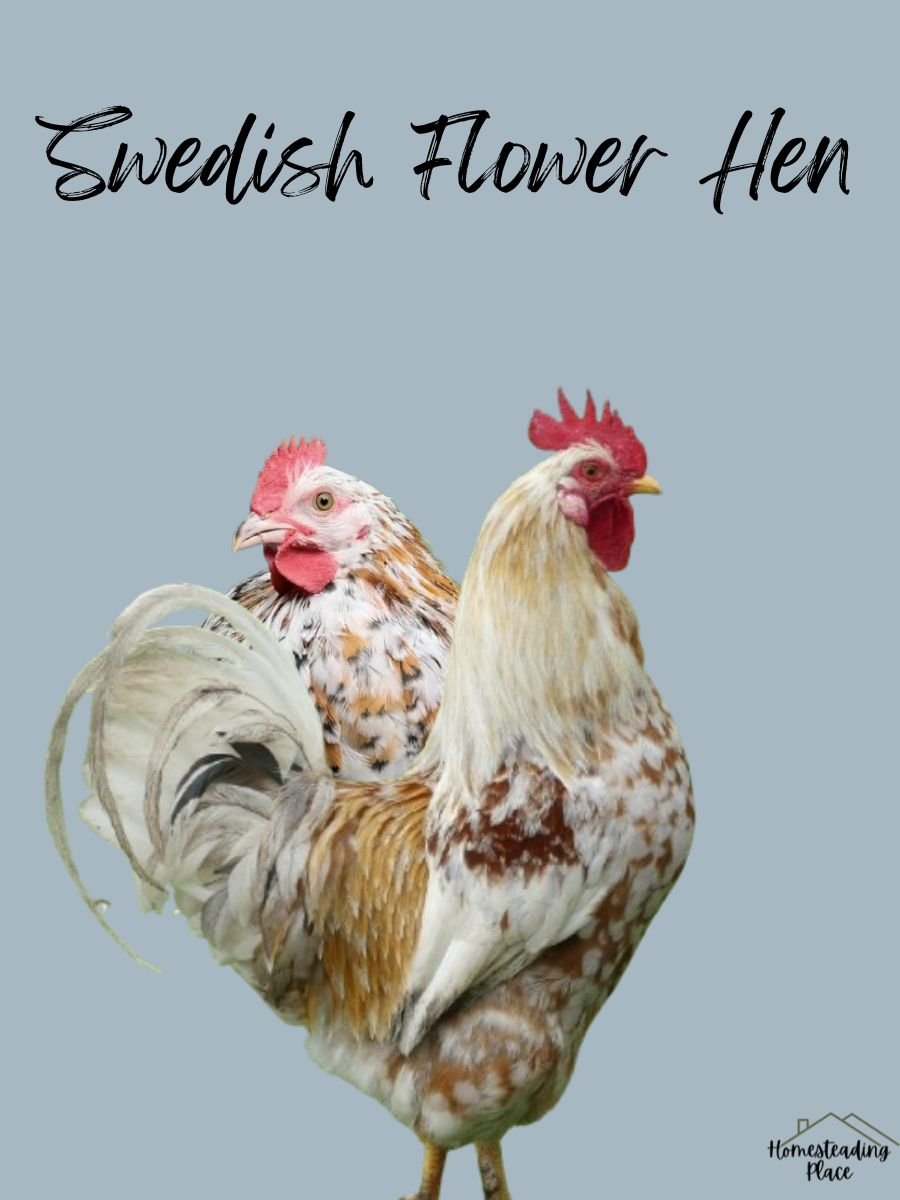
They like to go on free range independently and enjoy human interaction.
With that said, Swedish Flower Hen is good foragers and avoids predators well. Good choice to raise homesteads or farms around forests.
They start laying at the age of 20 to 28 weeks.
You can expect them to give 4-6 pale brown to tinted eggs per week. 150 – 200 eggs total in a year.
Origin: Sweden.
Temperament: Friendly, docile, calm.
Characteristics: Good foragers, predator avoiders, hardy, excellent free-range birds, and adaptable.
Ideal for: Cold climates and beginners
Uses: Eggs and ornamental purposes
21. Yokohama (White)
Yokohamas are known for long white saddle feathers, making them great for ornamental flocks.
They display back and white-flecked red breasts and red across wings and pure white plumage in the background.
The long flowing tail, walnut or pea comb, extended saddle, and sickle feathers add additional beauty and create a game-like appearance.
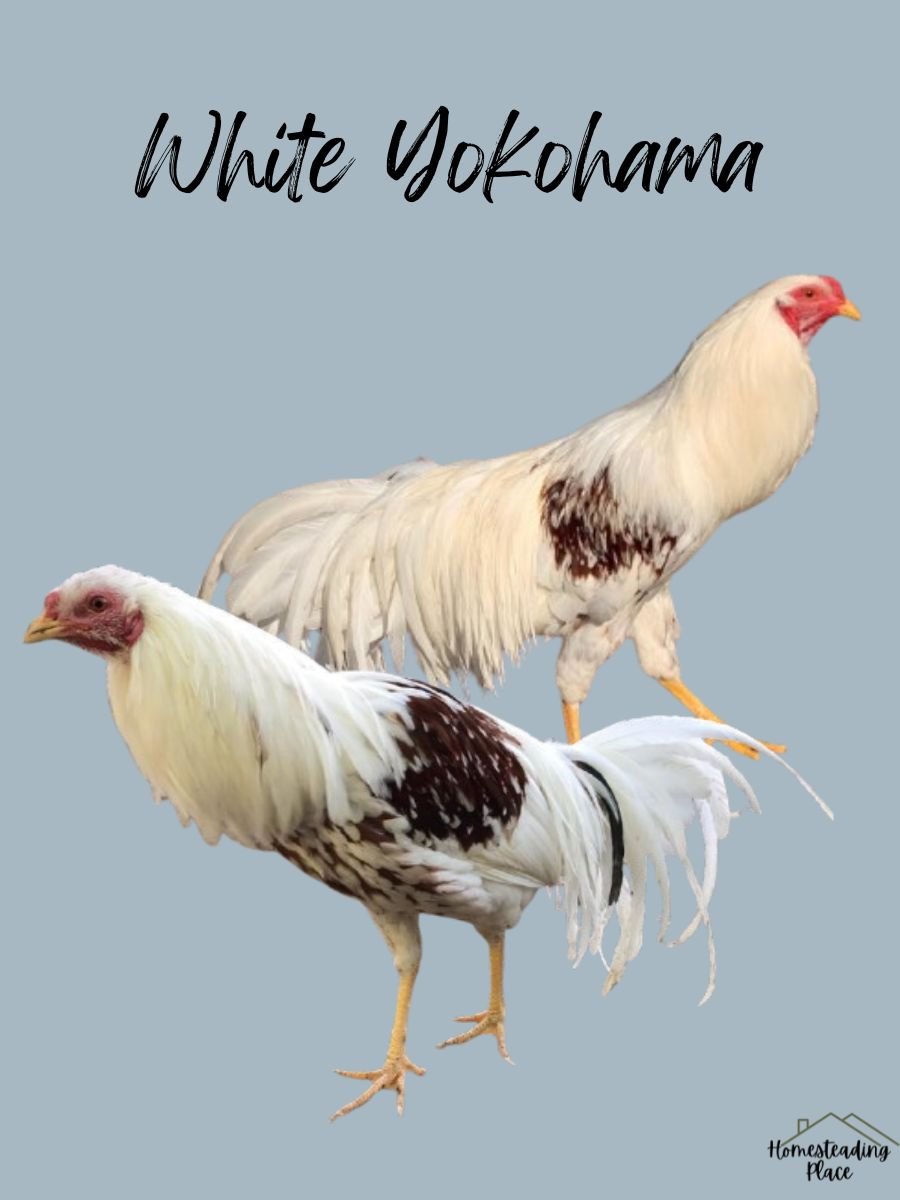
But chickens weigh only 4.5 – 3.5 lbs.
Though they are poor layers with small to medium-sized white/tinted 80-100 eggs per year, they make good mothers. After 12-14 eggs, they stop laying and go broody.
White Yokohama Chickens are rare and elegant chickens that live between 6 and 8 years.
Origin: Japan
Temperament: Docile, alert
Characteristics: Long tail feathers; pure white plumage
Ideal for: Ornamental purposes, warm climate
Uses: Show purposes
22. Sumatra
This black breed also boasts distinctive and beautiful long tails that grow downward to look droopy.
You can tell these chickens have jet-black plumage and a rich green sheen. They also have multiple spurs on legs and dark purple faces.
Everything is black shade, including the face, beak, comb, earlobes, throat, shanks, and legs. But shanks are somewhat gray.
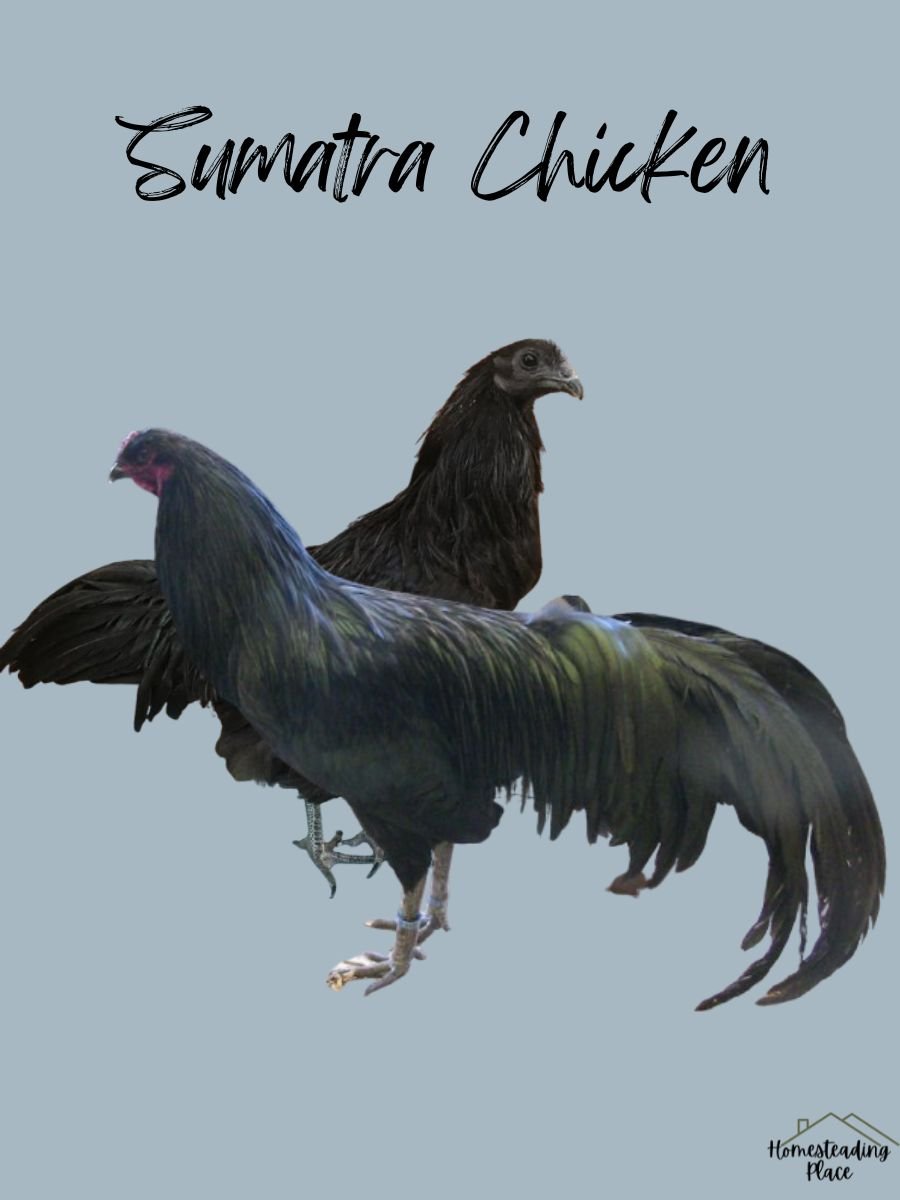
Sumtras mature slowly and start laying in 6-8 months. They are expected to yield 100 – 130 white or cream-tinted medium-sized eggs per year.
They give eggs even in the winter.
Hens are brooders and make good mothers. Though roosters don’t show aggressive behavior, cockerels seem agitated during breeding season.
Sumtras are small seasonal birds that breed in the early Spring and last a few months. You can expect them to weigh around 4 – 5 lbs.
Origin: Indonesia
Temperament: Active, flighty, aggressive
Characteristics: Glossy black feathers; hardy and requiring free-range system
Ideal for: Ornamental purposes, experienced keepers
Uses: Show and ornamental purposes
23. Sebright (Silver)
These small-looking birds are true bantam chickens that are only 20 – 24 oz.
They have compact and short bodies with breasts that lookalikes like pigeons. You can tell they are white with black outlines on the feathers.
Their silver feathers are laced in a similar fashion to that of laced Polish.
To your surprise, males also share the hen feathers with no spangle feathers on their bodies. Chickens look as if someone has drawn feathers with a fountain pen.
They are one of the bantam white and black chicken breeds and the oldest British breeds.
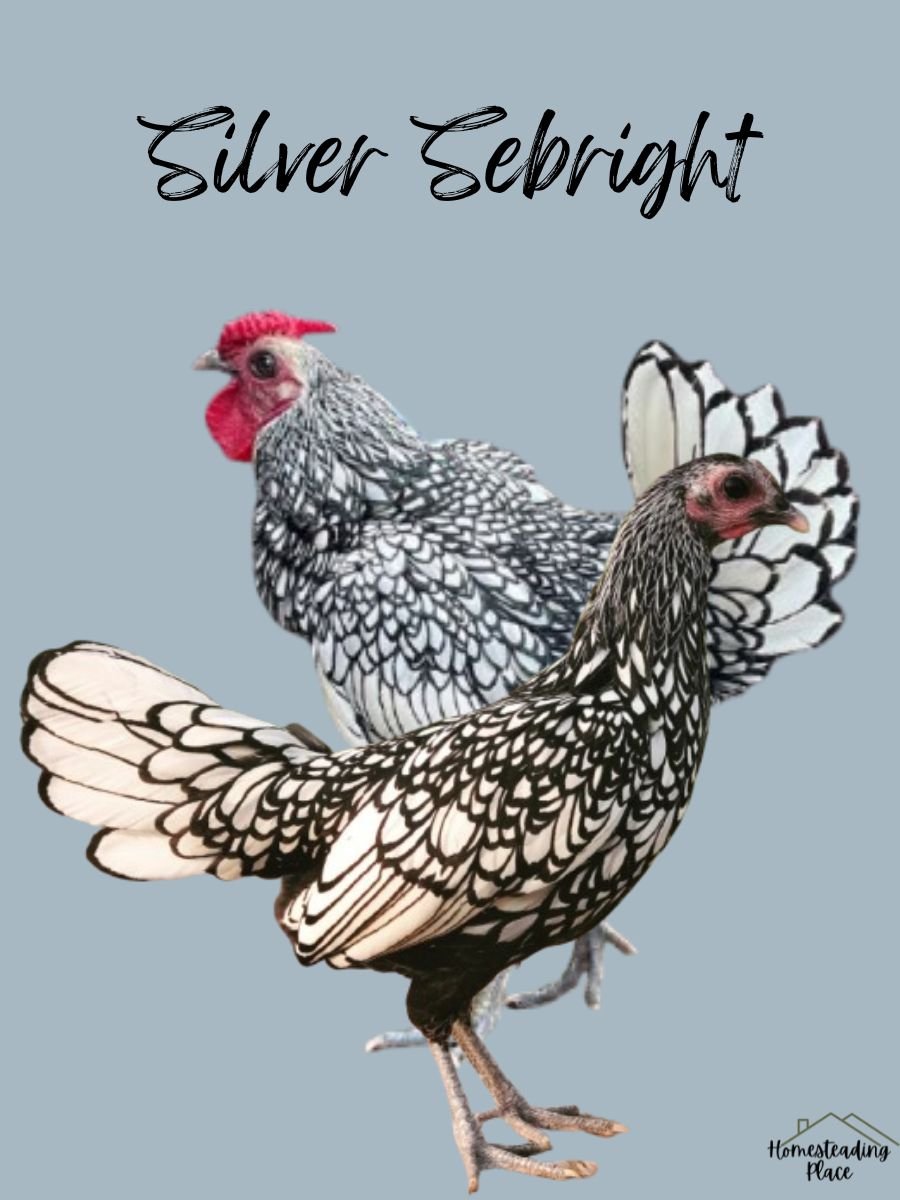
You can collect Sebright for show purposes, as they aren’t worth it for meat and eggs. They can lay 60-80 tiny, white eggs when they are 5 to 6 months old.
Also, they are less likely to thrive in cold and damp environments.
So, I don’t suggest this breed for beginners.
But many claim to have 140-160 small white eggs per year.
Origin: England
Temperament: Friendly, active, flighty, non-broody, spunky, and easily tamed
Characteristics: Black-laced white feathers; bantam size
Ideal for: Warm climates
Uses: Show purposes
24. Java
Java chickens make good small backyard flocks. Their 7.5 to 9.5 lbs weight are perfect for family-friendly farms.
They have a deep, full, round breast with an extended back and make a solid, rectangular shape.
So, they look like Rhode Island Red but own a sloping topline.
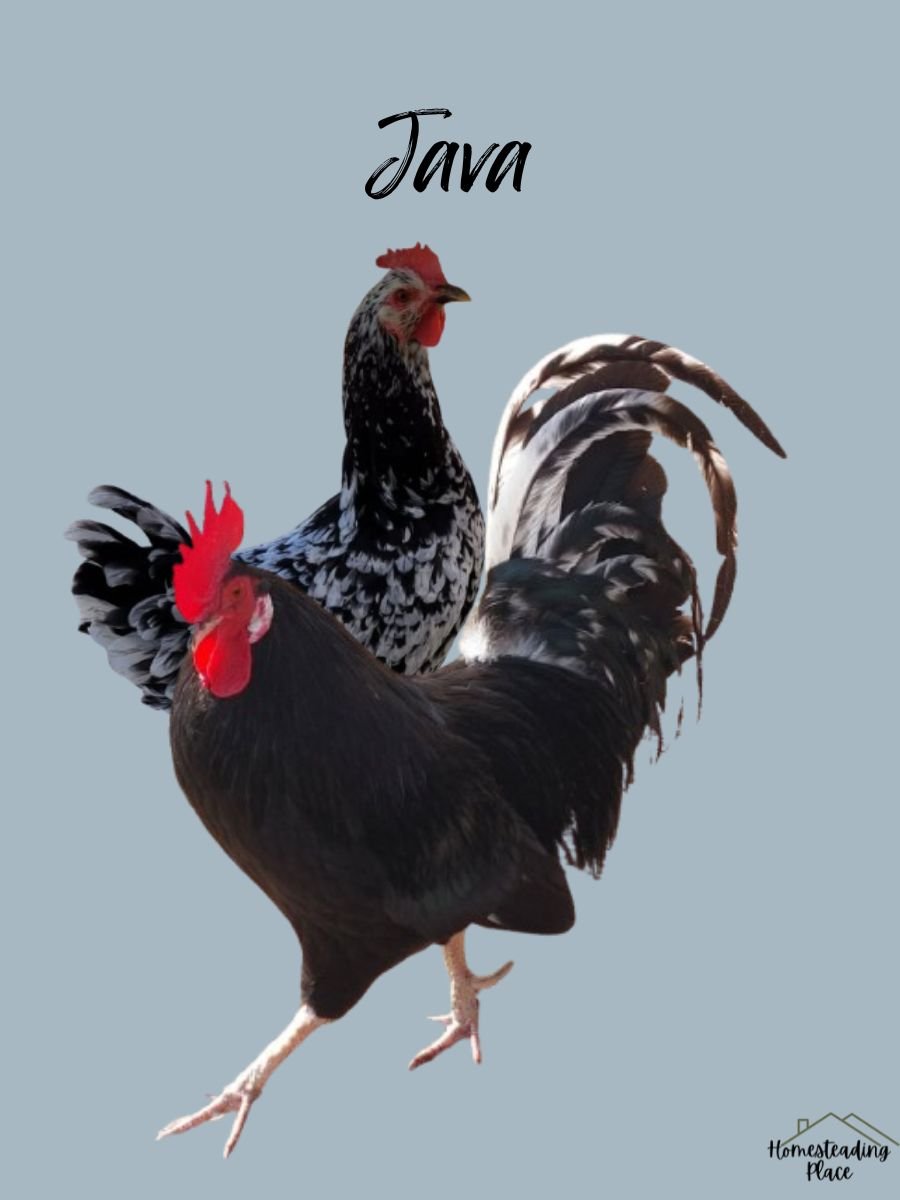
Chickens are mature slowly compared to many other breeds. Once they are 8 months old, they lay 150-180 large tinted-to-dark brown eggs per year.
They also give eggs in the winter and make good brooders and mothers.
Javas continue laying eggs for a long time and live for 5 – 8 years.
Origin: United States
Temperament: Calm, hardy, friendly, calm and nonaggressive
Characteristics: Dual-purpose breed, mix of black and white feathers, great foragers
Ideal for: Free-range systems
Uses: Eggs and meat
25. Shamo (White)
If you’re looking for large, tall, ornamental chicken flocks, Shamo can be your choice.
Shamos grow up to 30 inches and hold upright, almost vertical, muscular body. They also have well-muscled thighs, yellow-colored legs, and hard feathers.
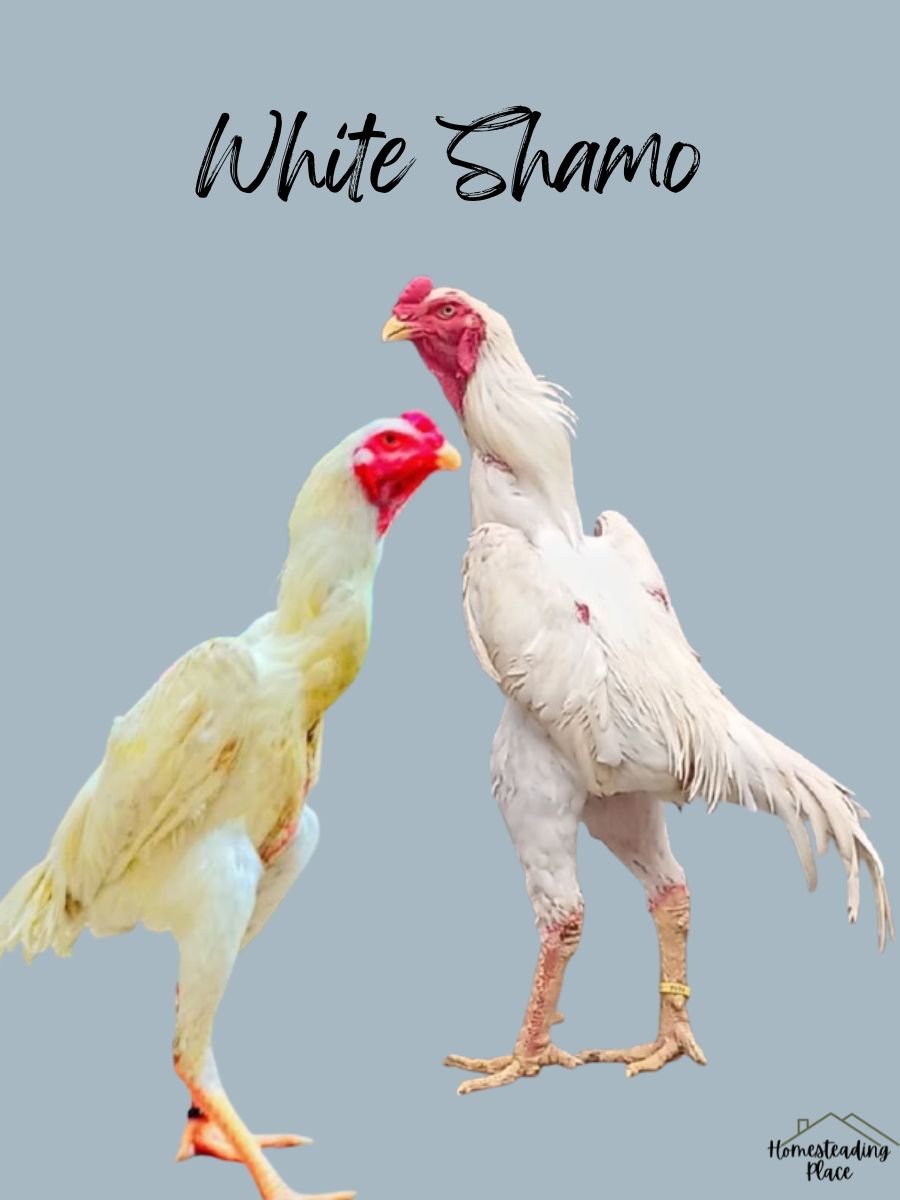
Though they have feathers close to the skin, plumage doesn’t cover fully, often lacking in the face, throat, belly, or wings.
Anyway, you can get a good meat prize, weighing 12 lbs for males and 7 lbs for females.
They are poor egg layers with 90 – 100 medium to large, light brown eggs per year. But they can be good mothers.
Another problem is that they are clumsy due to their size and lack of feathers. They often complain about breaking eggs when sitting.
You need to raise them in pairs and separate them from other breeds. Shamos don’t make good relations with others because of their aggression.
They are bred at 8 months and live for 6 – 8 years.
Origin: Japan
Temperament: Assertive and hardy
Characteristics: Tall stance, solid white feathers, good mothers
Ideal for: Experienced keepers
Uses: Firm and tough meat, and show purposes
26. Sicilian Buttercup (Light Variants)
Sicilian Buttercup chickens are rather famous for their unique comb, shaped like a cup or flower, hence the name.
They are small birds with 5 – 6.5 lbs at maturity.
You can tell them with pure white plumage, almond-shaped white earlobes, and well-rounded wattles.
Chickens are nonbroody but lay 140-180 small to medium white eggs per year. They start giving eggs around 5-8 months of age. But many take 10 months.
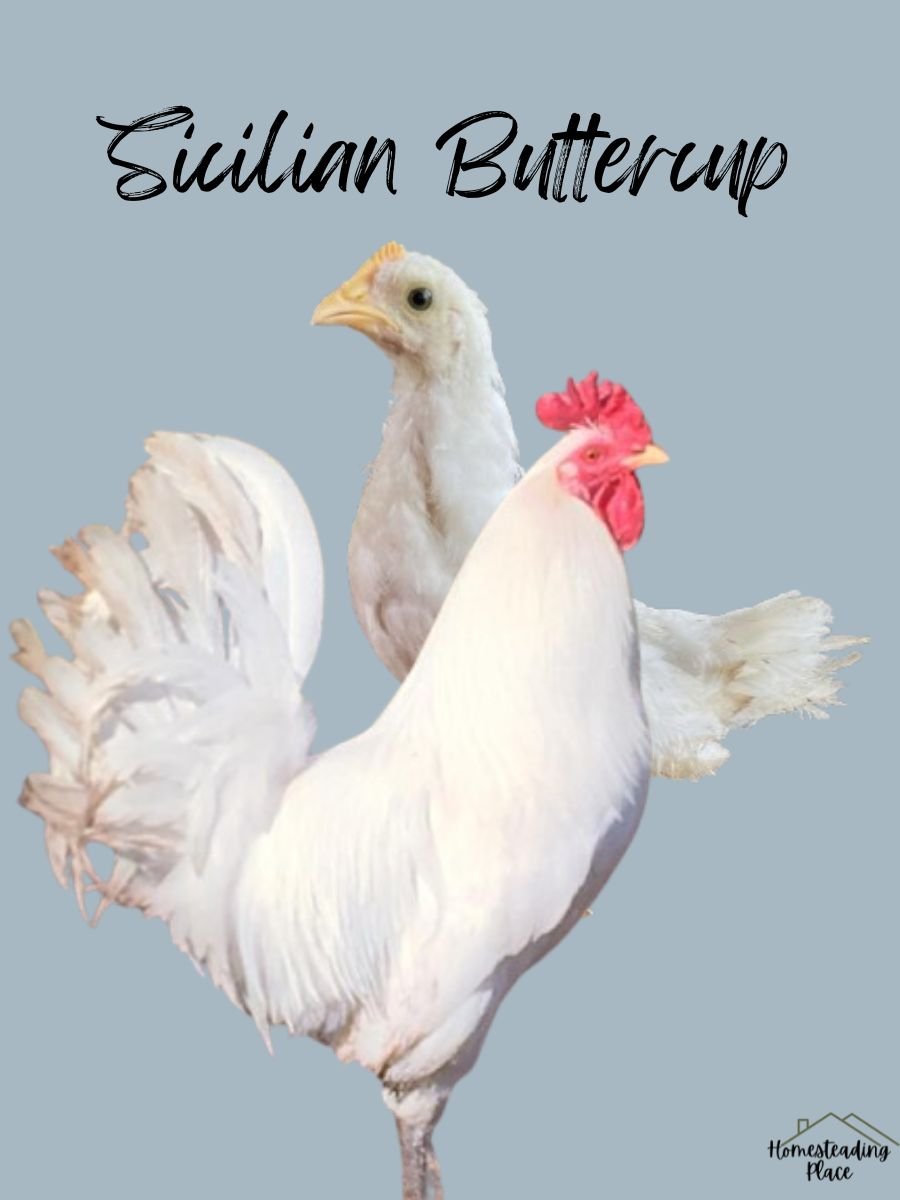
If you need to raise Sicilian Buttercups, arrange for a free-range system.
They are good foragers and don’t like confinement. Also, these birds are food for hot environments.
Origin: Italy
Temperament: Alert, active and flighty
Characteristics: Light feathers with unique combs; moderate to good foragers moderate layers
Ideal for: Ornamental purposes, egg production, and warm climate
Uses: Eggs and show purposes.
27. Dorking (White)
This dual-purpose breed can feed a family-owned farm or homestead.
Dorking chickens are processed at 6 – 7 months for 6 – 7 lbs. But they can hit 7 lbs for females and 9 lbs for males.
They are white birds with V-shaped rectangular bodies with short legs. But they can also be a mix of black and white feathers.
Chickens also have relatively large combs to protect them from cold weather. To add more, they develop pinkish-white beaks, red earlobes, five toes, and white skin.
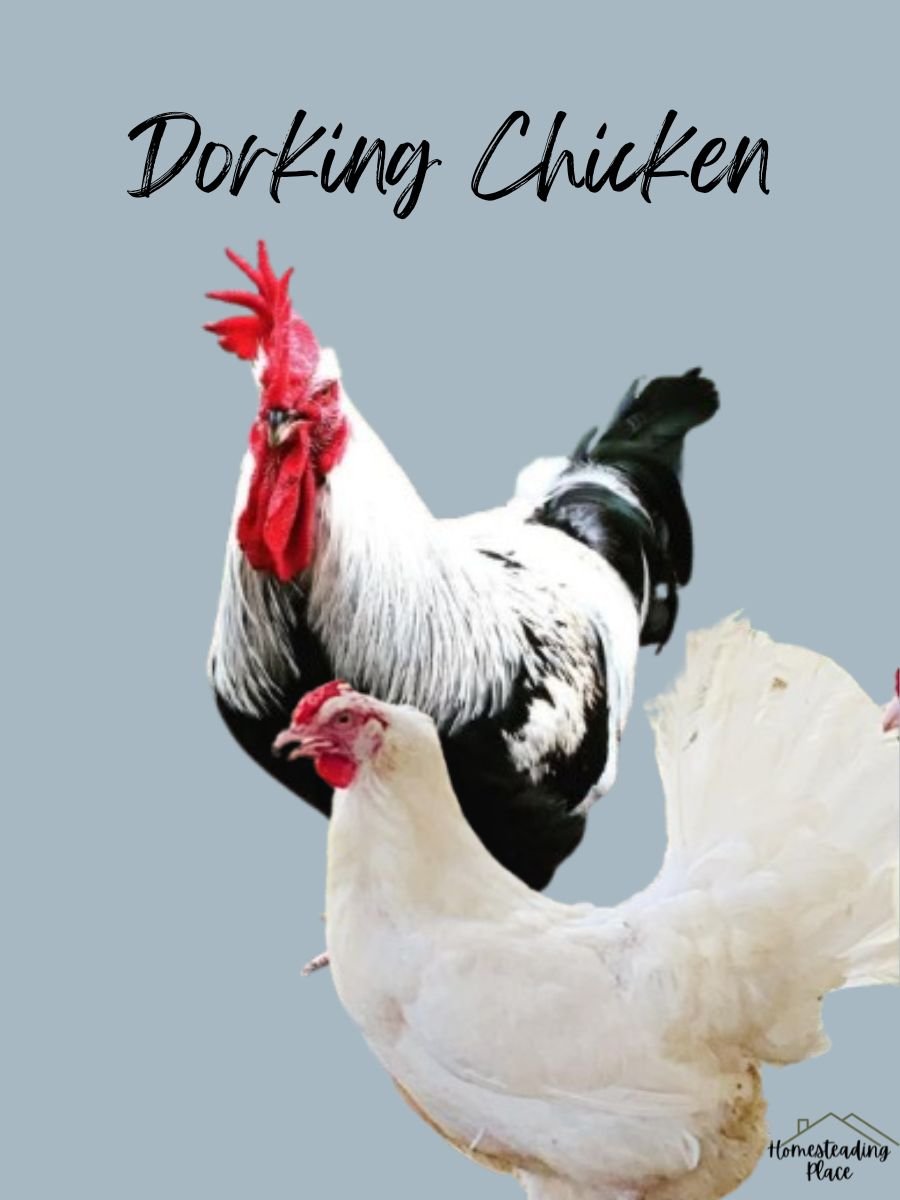
Many keepers find Dorkings grow rapidly and start laying between 5 and 6 months.
You can expect hens to lay 4 to 5 round white eggs per week and 150 to 200 medium eggs per year.
Dorking chickens have a lifespan of 6 – 7 years, but roosters lose fertility after 4 years.
Origin: England
Temperament: Gentle, docile, friendly, calm, and welcoming to children
Characteristics: a good layer, a close sitter, moderate to good forage,r and a caring mother
Ideal for: Confinement or free range system, family-friendly homesteads
Uses: Meat and eggs
28. Frizzle (Black and White Varieties)
Farmers have two options in the Frizzle breed. While standard chickens weigh between 4 and 8 lbs, bantams grow for 20 to 28 oz.
Frizzles are short and round with feathers that curl outwards instead of growing flat.
They have full breasts, short erect bodies, long wings, and large tails. Also, they are docile, inactive, and moderate layers.
Chickens are ready to lay eggs around 5 or 6 months. You can expect them to give 2 or 3 eggs per week from a single bird. So, 120 – 160 medium-sized cream or tinted eggs per year.
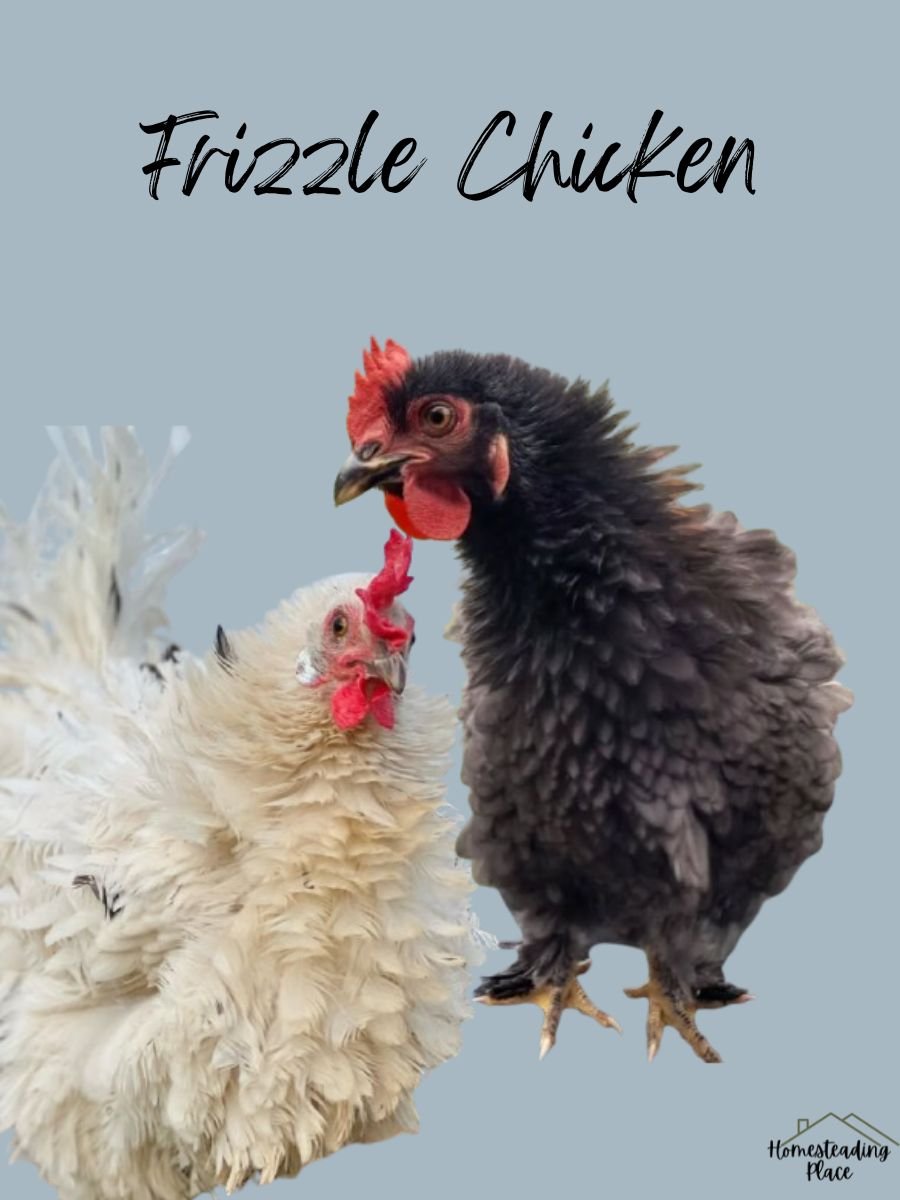
Anyway, Frizzles are primarily kept for the show ring.
And they make sense when they show hardy nature in the warm and cold climate.
Origin: Asia
Temperament: Docile, gentle and quiet
Characteristics: Unique frizzled feathers, bedhead, adaptable, forager, broody, good mothers.
Ideal for: Backyard farms
Uses: Ornamental purposes
29. Sultan (White)
Popular for its unique appearance, the Sultan has been one of the popular ornamental breeds.
They are snow-white chickens with feathered, slate-blue shanks and legs. You can identify them with crested heads, v-shaped comb, and low wings.
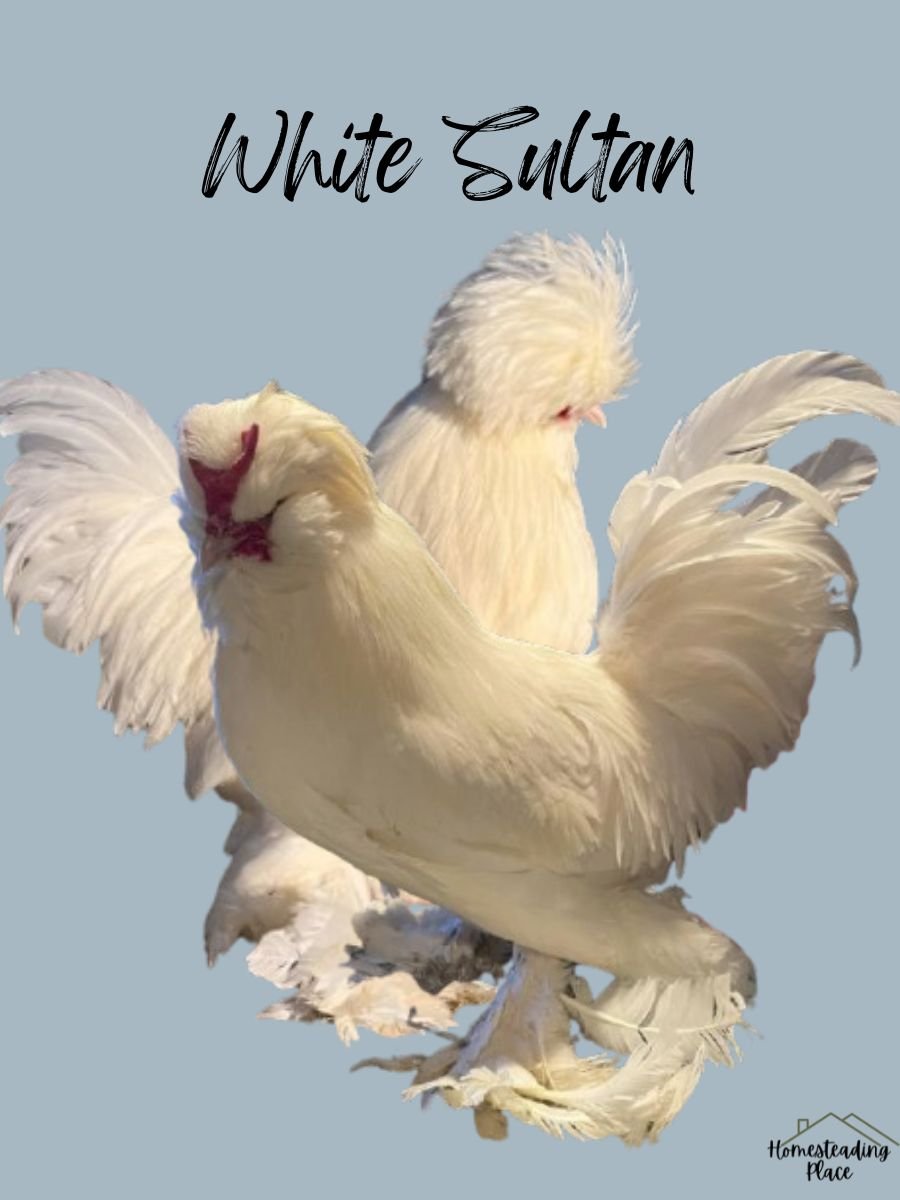
Chickens boast poufy hairdo, puffy cheeks, a beard, and five toes.
Sultan chickens stand somehow erect and weigh 4 – 6 lbs. They tend to be calm, docile, and interactive.
Once they are 20-24 weeks, they start laying eggs. Though they are poor layers with only 50 – 70 eggs per year.
They have profuse white feathering chickens that require additional care. So, I don’t recommend it for backyard flocks.
Origin: Turkey
Temperament: Gentle and docile
Characteristics: Non-sitters, poor brooder and mother
Ideal for: Ornamental purposes.
Uses: Show purposes
30. Polish (Black and White Varieties)
Polish chickens stand out of the crowd due to their unusual and beautiful appearance.
They boast a large puff of feathers or crown feathers on the top of their heads. Also, they have a small v-shaped comb, red wattles, and white earlobes, all hidden in the crest.
These chickens are medium-sized, tall, and slim birds weighing 4.5 – 6 lbs, similar to Leghorns.
This breed also owns a flowing beard. Due to their lightweight, they can be good flyers. But they get easily surprised or frightened and show nervous behavior.
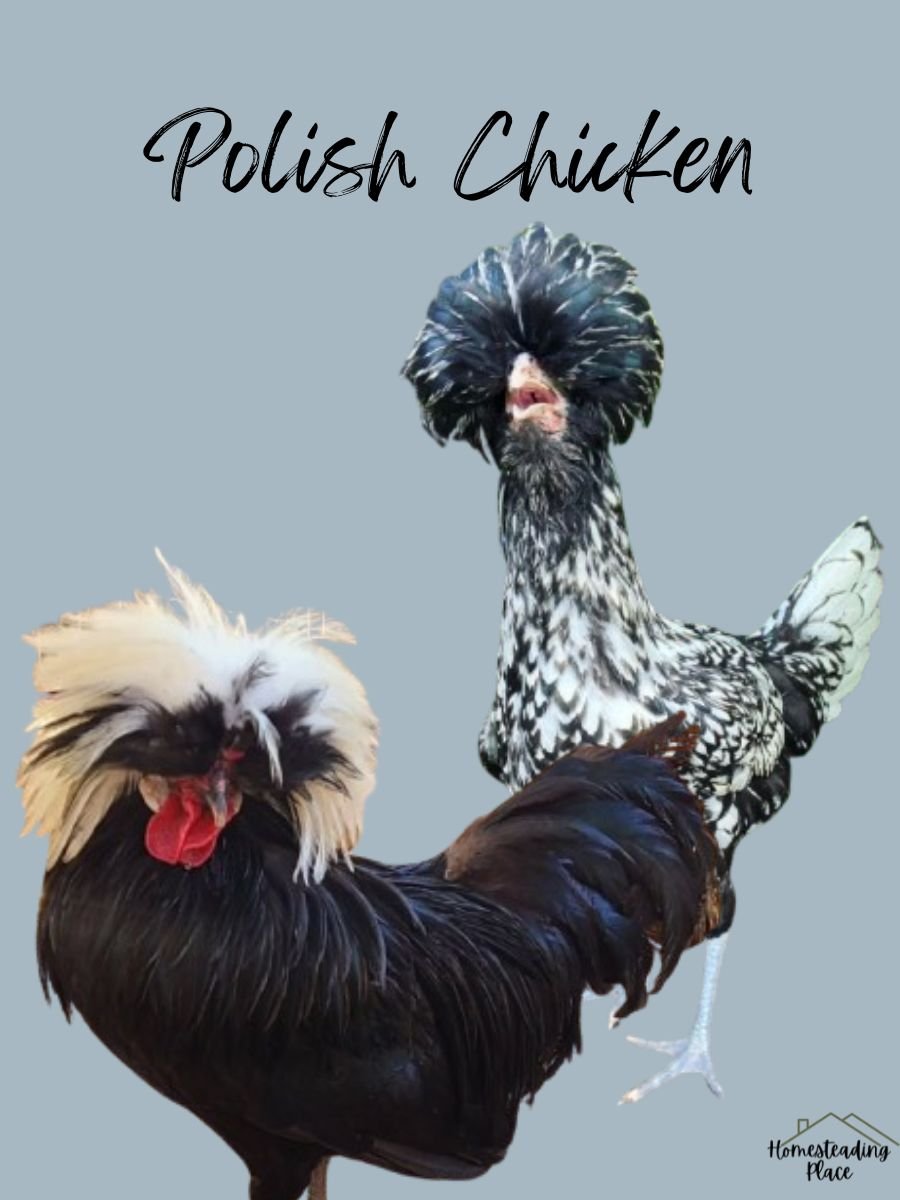
Still, they can interact with keepers. You can expect your chickens to lay for the first time around 20 weeks.
They give 150 – 200 medium or large white eggs annually.
Chickens don’t brood and show aggression to chicks and flocks. They are expected to live for 7 to 8 years.
Polish hens aren’t typically broody but are not aggressive towards chicks or flock mates.
Origin: Netherlands
Temperament: Friendly, calm, gentle, active, timid and docile
Characteristics: Crest of feathers, striking black and white variants, rare brooders, none sitter, poor mother
Ideal for: Ornamental purposes
Uses: Eggs and show purposes
31. Naked Neck (White and Black Variants)
You heard it right.
Naked-neck chickens naturally lack feathers on the long neck and vent. When they appear under the sun, their neck looks reddish, resembling turkeys.
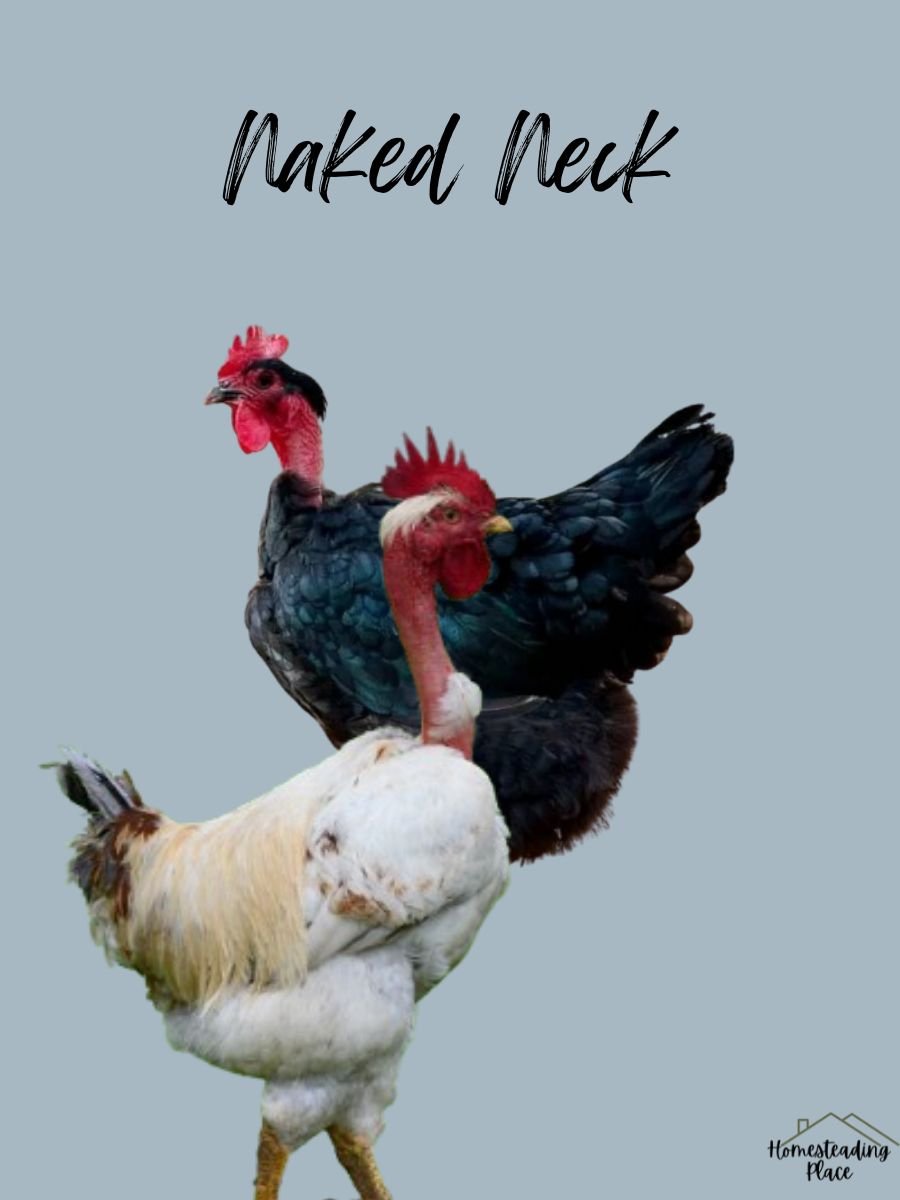
They have also less amount of feathers on the rest of the body. Either they are pure black or white or mixed with a few other colors such as golden or brown.
This helps them thrive in the hot weather easily and makes it easy to pluck.
Medium-sized red upright single comb, wattles, and earlobes are extra features of chicken’s appearance.
Besides, Naked Necks weigh 6.5 – 8.5 lbs at maturity. When they are around 22 weeks, they lay 120-200 large brown eggs per year
The dual-purpose chickens are sweet, docile, calm, cuddly, and easy to handle.
They can be kept in small coops or free-range systems. Though they don’t make good brooders due to their less plumage, they can still warm a few eggs when they sit.
Origin: Eastern Europe
Temperament: Hardy and friendly
Characteristics: Featherless long neck, adaptable to all climates
Ideal for: Homesteaders in diverse climates
Uses: Meat and eggs
32. Icelandic (Black and White Variants)
Icelandics are rather small birds that weigh 3.5 – 5.5 lbs.
You can tell them by a small head, short neck, compact body, and high tail. They also have long yellow shanks and clean feathers.
While males are long and upturned, females have small spurs. Also, hens can be pure white, and roosters boast a mix of black and white with specked or scale feathers.
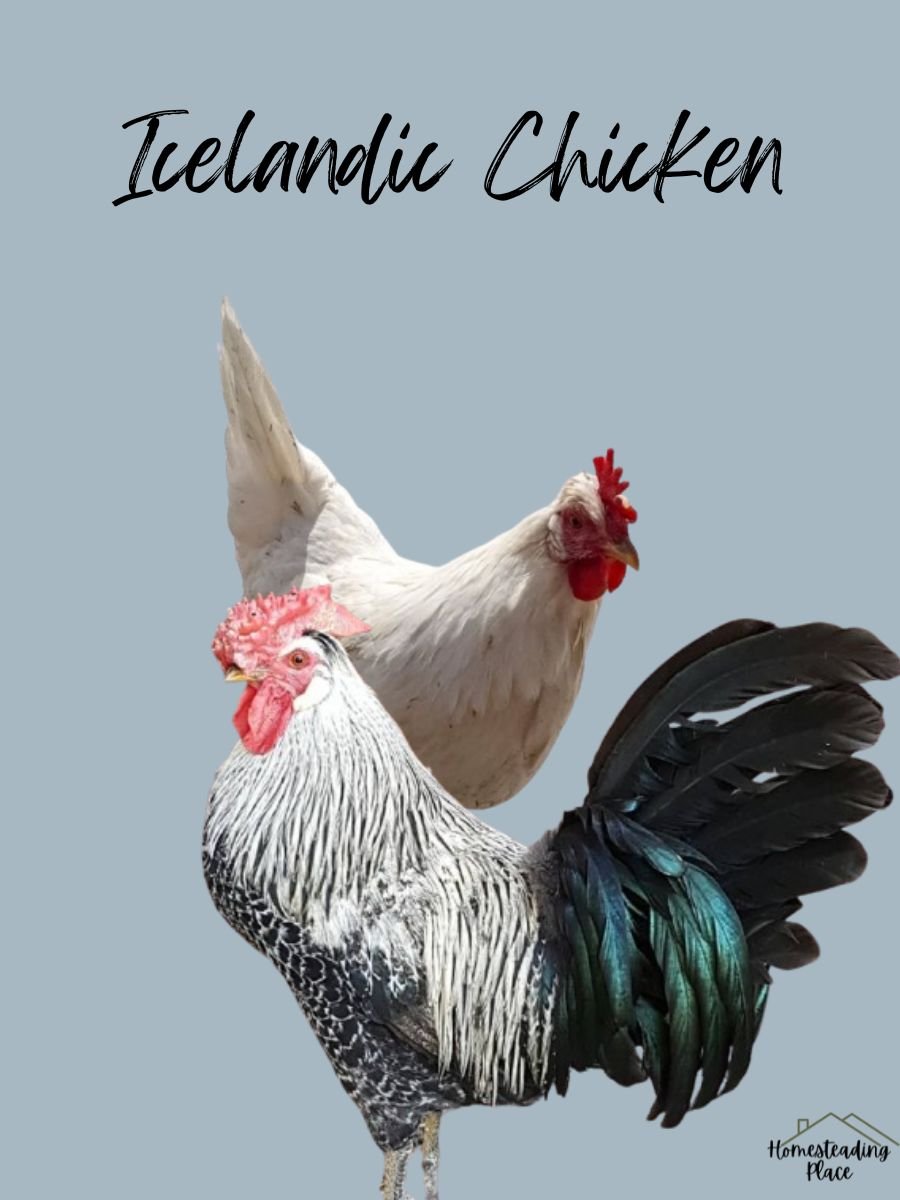
Roosters also have wide, curved sickle feathers.
Anyway, chickens are low-maintenance birds with the ability to forage and thrive in diverse landscapes.
Besides their hardiness, Icelandic chickens are good layers, producing 150 – 200 eggs per year after 4.5 months. They lay in the winter as well.
Though the number is still smaller to that of Minorcas, Leghorns, and Rhode Island Reds, it’s worth investing in a feed-thrifty laying flock.
Origin: Iceland
Temperament: Hardy, active, independent
Characteristics: Black and white variants, good layers, excellent foragers
Ideal for: Diverse climates
Uses: Eggs and meat
33. Crevecoeur (Black)
Need a medium-sized cool black breed? Crèvecoeur chickens are here!
Crèvecoeurs have compact, well built bodies with short legs resembling Dorking in body. They are in sold black color with a green sheen and have moderate crest and beard.
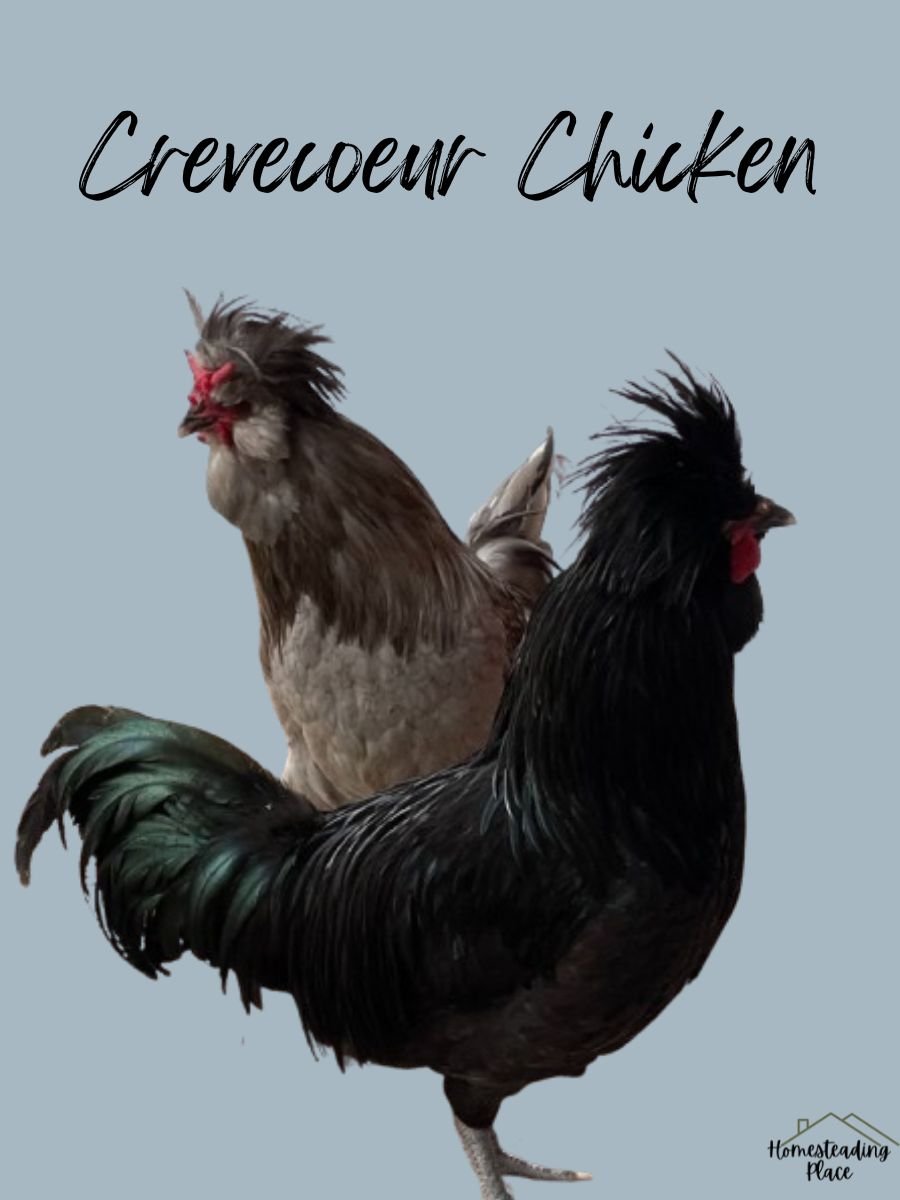
You will notice they have a V shaped comb around the crown feathers, red wattles, and earlobes.
This type of fowl has a lean body, deep chest, and round back.
Chickens weigh from 6.5 to 8 lbs and possess small, fine bones and a high meat-to-offal ratio.
They start laying white to tinted, medium to large eggs between 7 and 10 months, averaging 120 – 150 per year. But they don’t go broody.
Origin: France
Temperament: Friendly and calm
Characteristics: Glossy black feathers, non broody, crested head
Ideal for: Small farms
Uses: Meat, eggs, and exhibition purposes
34. Minorca (Black and White Variants)
Minorca hens are known for producing the largest eggs of white egg-laying breeds.
They yield 140-220 eggs per year but they are not good brothers. Also, they are the largest Mediterranean chickens, weighing 7.5 – 9 lbs.
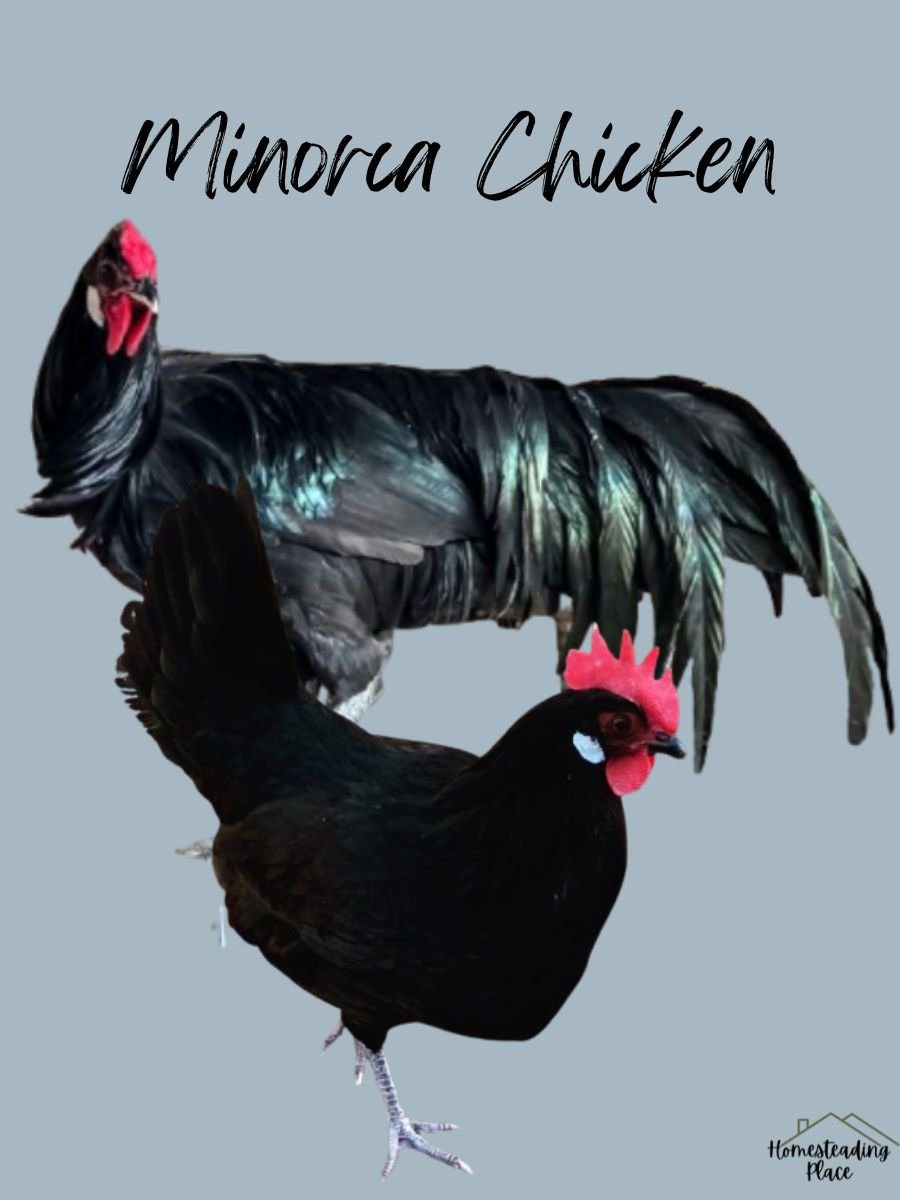
Chickens have long, angular bodies with extended tails, muscular legs, and large wide feathers.
You can tell Monorcas by uniformly glossy greenish-black plumage. They have comparatively large combs and wattles in the winter and chances are high to frostbite when foraging.
So, they are preferred for warm places.
Anyway, you can say that Minorcas are good for meat and eggs and are kept as an ornamental breed. Hens are expected to lay at the age of 18-22 weeks.
Origin: Spain
Temperament: Active, flighty and hardy
Characteristics: Large size, black and white variants, excellent layers
Ideal for: Warm climates
Uses: Meat, eggs and ornamental purposes
35. White-Faced Black Spanish
Another black chicken breed that weighs 6.5 – 8 lbs. Let’s say medium-sized chickens.
White Faced Black Spanish chickens have beautiful greenish-black plumage with tightly fitted feathers and decent flowing tails.
They also have a unique white skin around the face and wattle, which is overly grown or low-hanging earlobe. This gives an unusual and dramatic appearance to the flock.
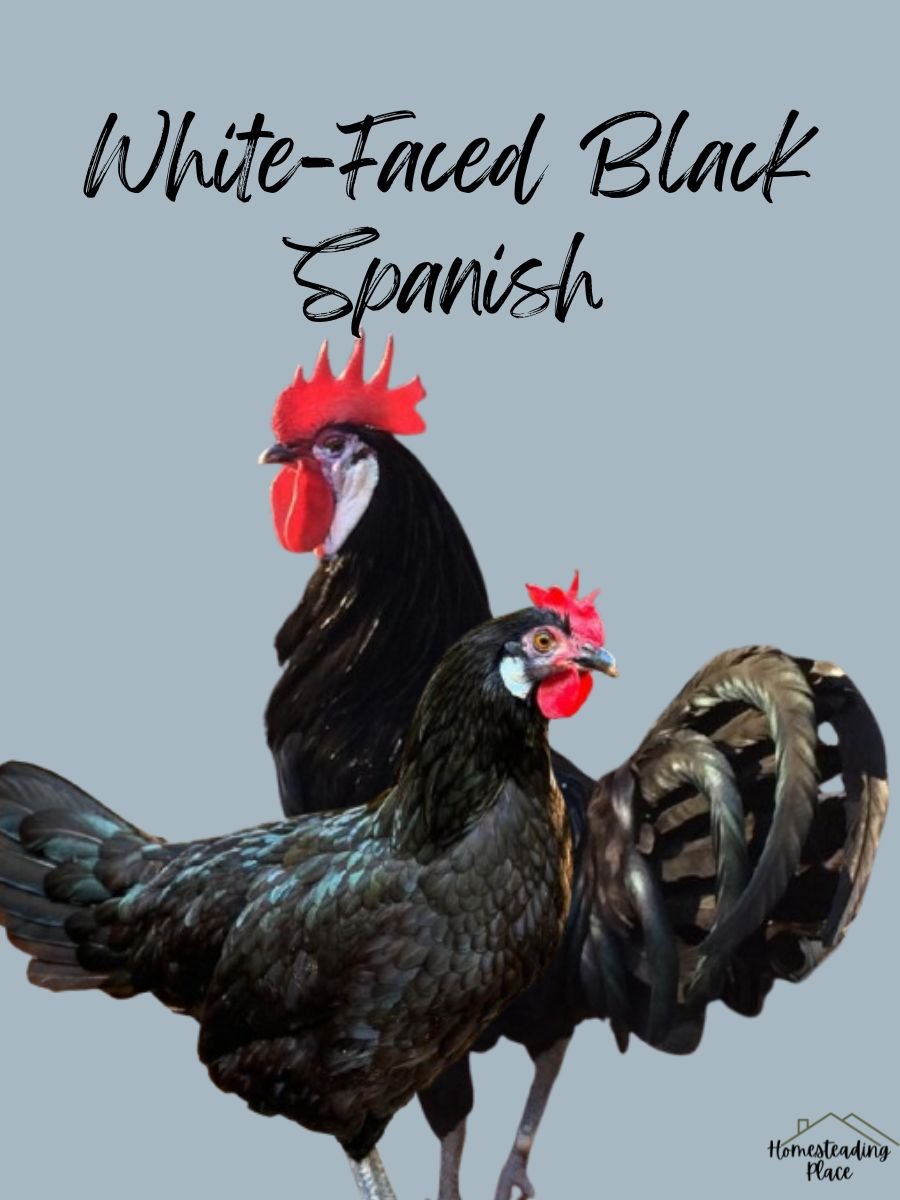
Also, chickens are quick to mature, around 20 weeks of age, and produce about 180 large chalk-white eggs.
They don’t go broody and can be noisy, too. But their temperament is good for keeping in the distant farm.
Origin: Spain
Temperament: Active and hardy
Characteristics: Glossy black feathers with a white face, prolific layers of white eggs, non-brooders
Ideal for: Warm climates
Uses: Meat, egg production and show purposes
36. Ayam Cemani
This is also a solid black chicken breed that weighs 4 – 7 lbs.
It has everything black, including plumage, comb, wattle and legs. You can notice the greenish sheen of black feathers under the light.
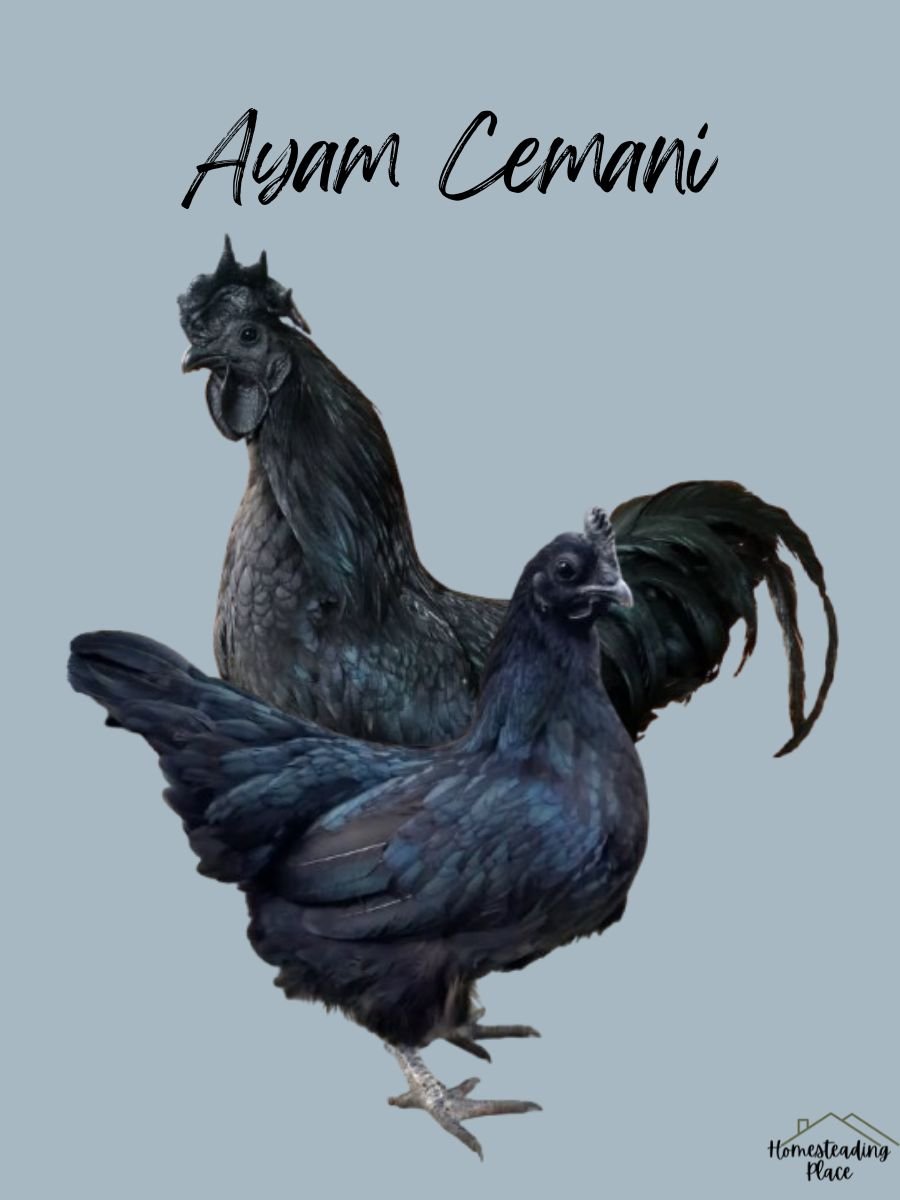
You can expect your chickens to start laying eggs around 5 – 6 months.
80 – 120 small to medium white eggs per year.
Origin: Indonesia
Temperament: Active, calm, friendly
Characteristics: All black chicken breed, good layers
Ideal for: Small farmstead
Uses: Egg production and show purposes
Alternative to white and black chickens, you can raise yellow chicken breeds.
Final Thoughts
There are other white and black chicken breeds with unique traits for keeping. But I think it’s enough options for your home or farm needs.
Those who raise for food need to focus on dual-purpose breeds, individuals, i.e., meat or egg-oriented.
If you like to experiment with a mix of breeds, try bantams and ornamental breeds for aesthetic and functional benefits.



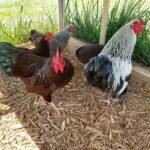
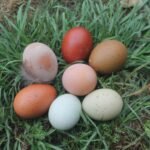
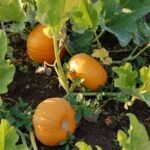
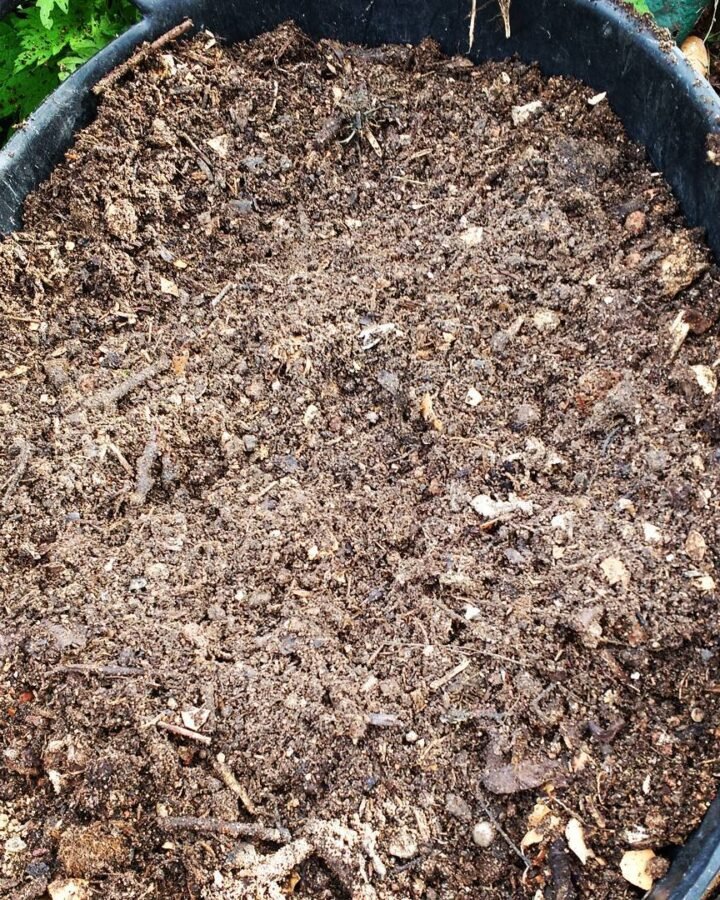
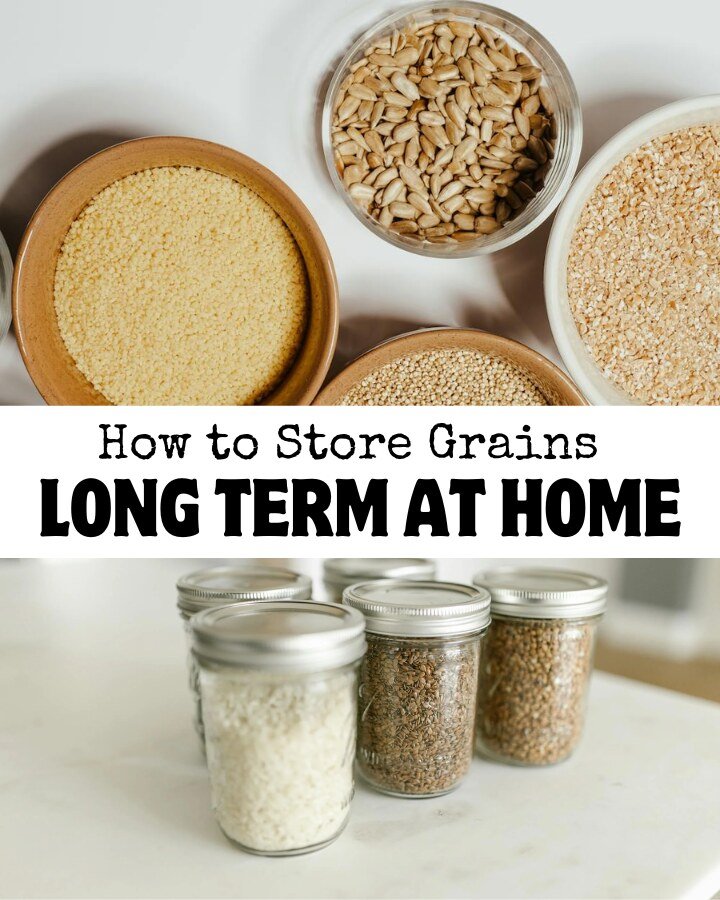

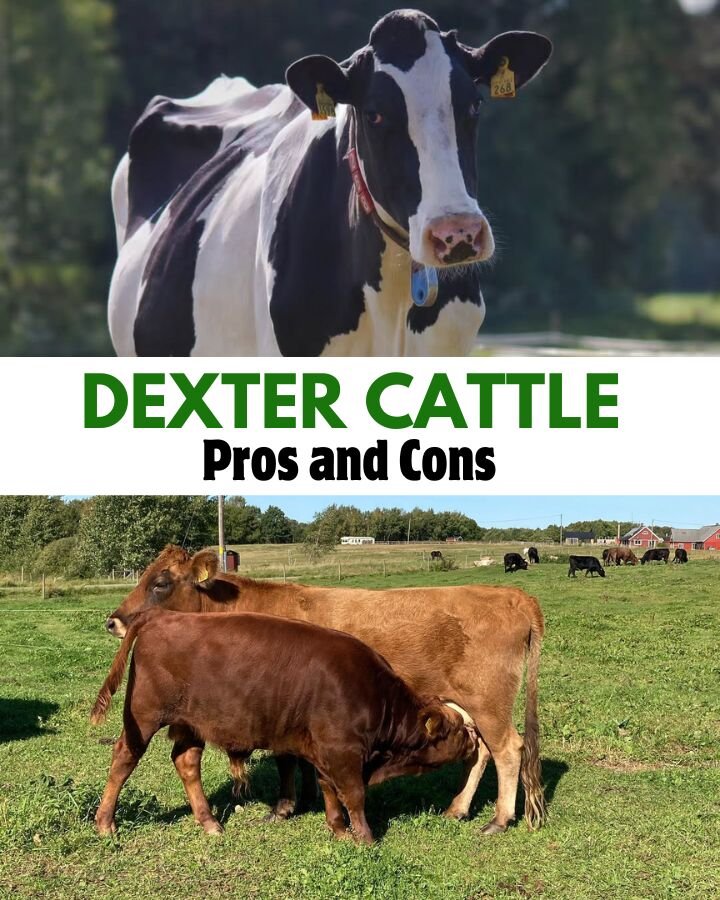
Leave a Reply